Vol. 70, No. 22 (2021)
2021-11-20
GENERAL
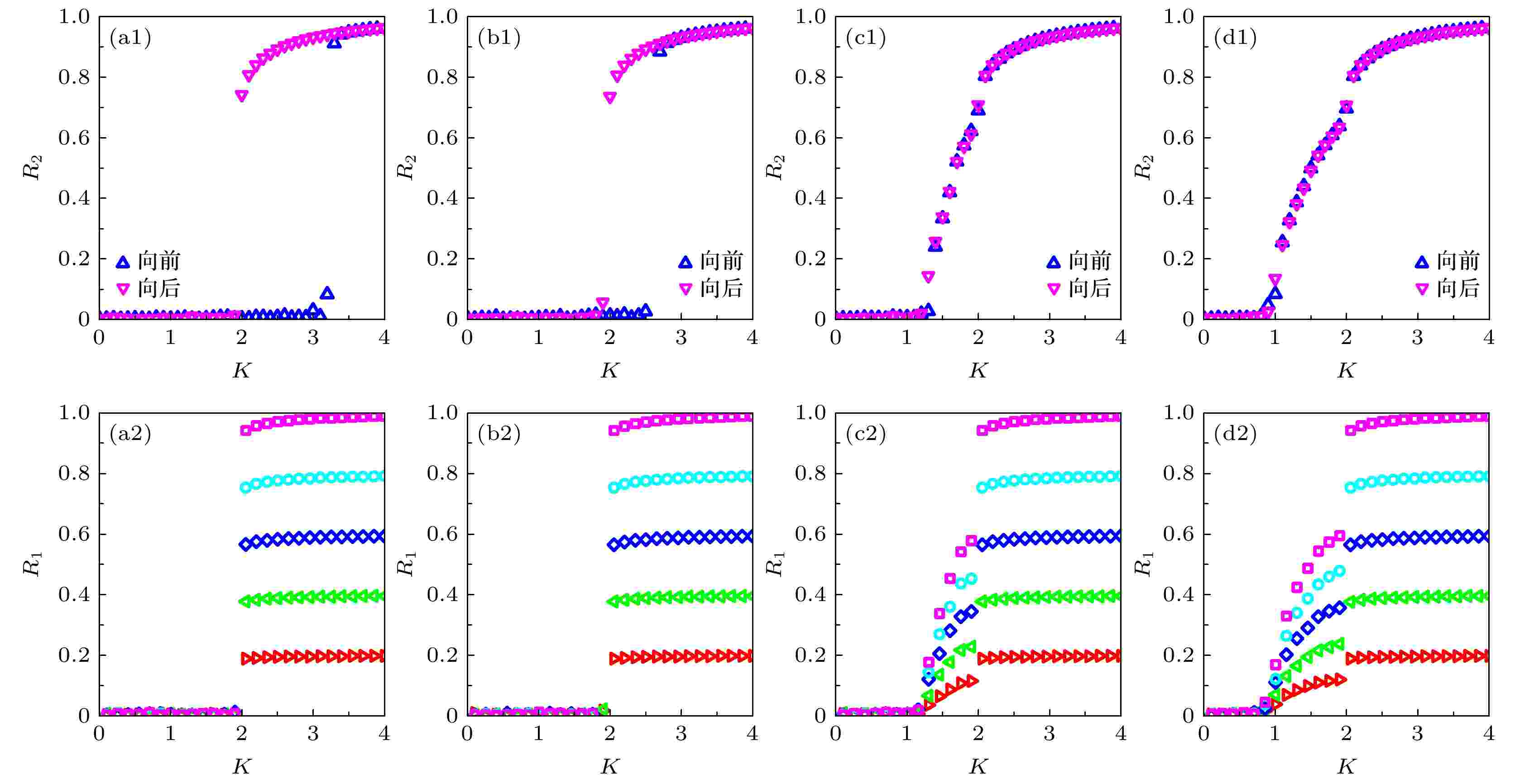
2021, 70 (22): 220501.
doi:10.7498/aps.70.20211206
Abstract +
The Kuramoto model consisting of large ensembles of coupled phase oscillators serves as an illustrative paradigm for studying the synchronization transitions and collective behaviors in various self-sustained systems. In recent years, the research of the high-order coupled phase oscillators has attracted extensive interest for the high-order coupled structure playing an essential role in modeling the dynamics of code and data storage. By studying the effects of high-order coupling, we extend the Kuramoto model of high-order structure by considering the correlations between frequency and coupling, which reflects the intrinsic properties of heterogeneity of interactions between oscillators. Several novel dynamic phenomena occur in the model, including clustering, extensive multistability, explosive synchronization and oscillatory state. The universal form of the critical coupling strength characterizing the transition from disorder to order is obtained via an analysis of the stability of the incoherent state. Furthermore, we present the self-consistent approach and find the multi-cluster with their expressions of order parameters. The stability analysis of multi-cluster is performed in the subspace getting stability condition together with the stable solutions of order parameters. The discussion of all the results summarizes the mechanism of the transition from hysteresis to oscillatory states. In addition, we emphasize that the combination of the Kuramoto order parameter capturing the asymmetry of the system and the Daido order parameter representing the clustering can give a complete description of the macroscopic dynamics of the system. The research of this paper can improve the understanding of the effects of the heterogeneity among populations and the explosive synchronization occurring in higher-order coupled phase oscillators.
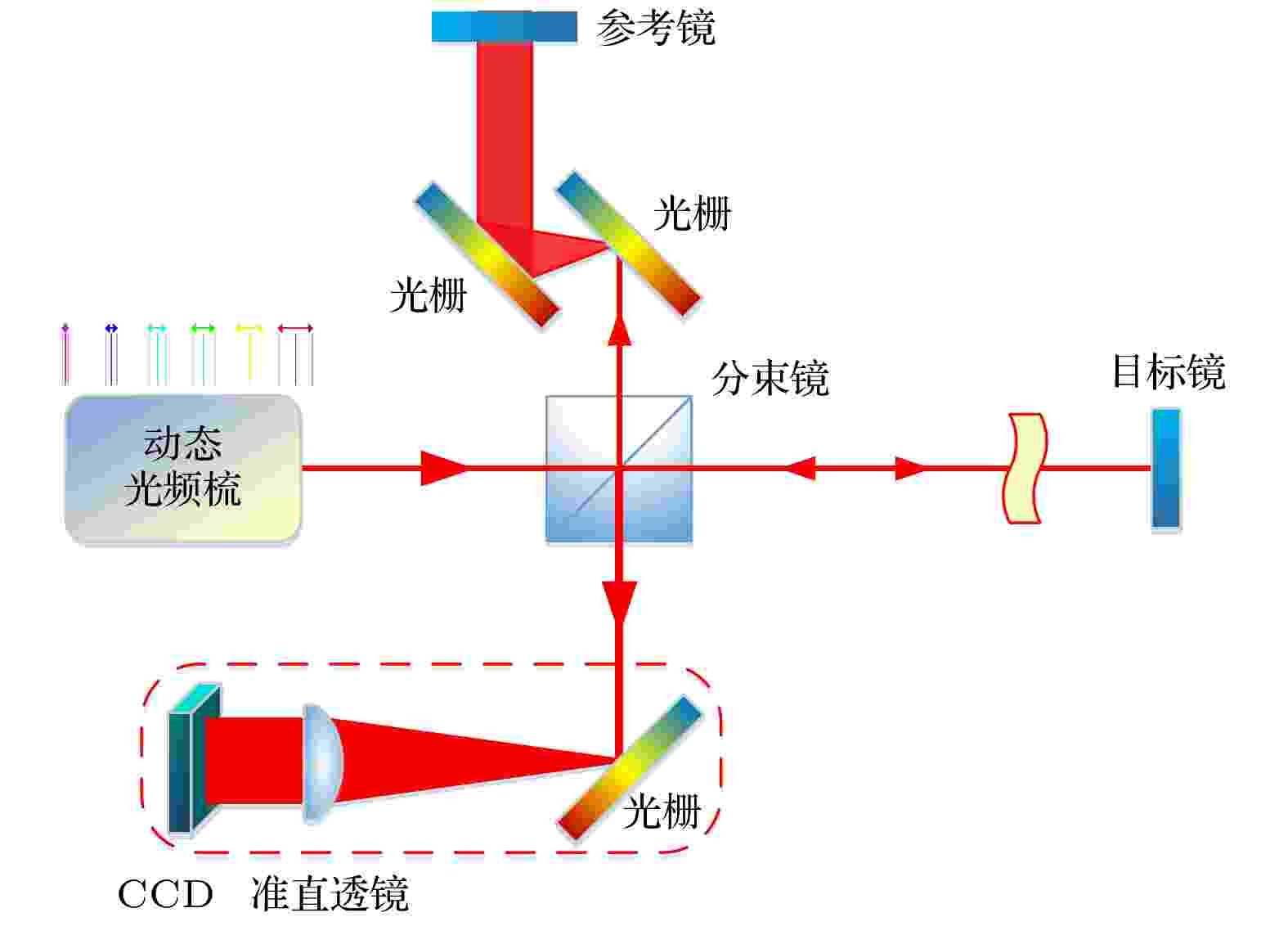
EDITOR'S SUGGESTION
2021, 70 (22): 220601.
doi:10.7498/aps.70.20202149
Abstract +
Frequency combs have given rise to revolutionary progress in a variety of applications. The absolute distance measurement by using frequency comb has been developing rapidly in recent years. In this paper, a method of rapid ranging via the dynamic chirped pulse interferometry is proposed. With the sweeping of comb spacing, the dynamic frequency offset of the sparsest stripes can be obtained in the chirped pulse interferometry, which leads to the cues about the measuring distance. The introduction of dynamic comb spacing can effectively reduce the dead zone of the optical spectrum analyzer. Based on the theory of synthetic wavelength, the multiple repetition frequency can also realize a great non-ambiguity range. In the measuring system, there is no need to lock the repetition rate any more, thereby removing the dependency of bulky phase-locking circuits, and simplifying the system. Besides, the rubidium clock brings the accurate clock reference in the system. Hence, the repetition rate and camera can perform strict synchronization. Considering the improvements of imaging frame rate and the scanning speed of repetition rates, the changed spectral interferograms can be obtained rapidly, and thus compensating for the speed deficiency of dispersive interferometry and cavity tuning. The experimental results show that elapsed time is 74.1 ms for the single time, corresponding to a data updating rate of 13.5 Hz. In a range of 20 m, the measurement uncertainty is well within 27 μm, i.e. the relative precision of 1.35 × 10–6.
NUCLEAR PHYSICS
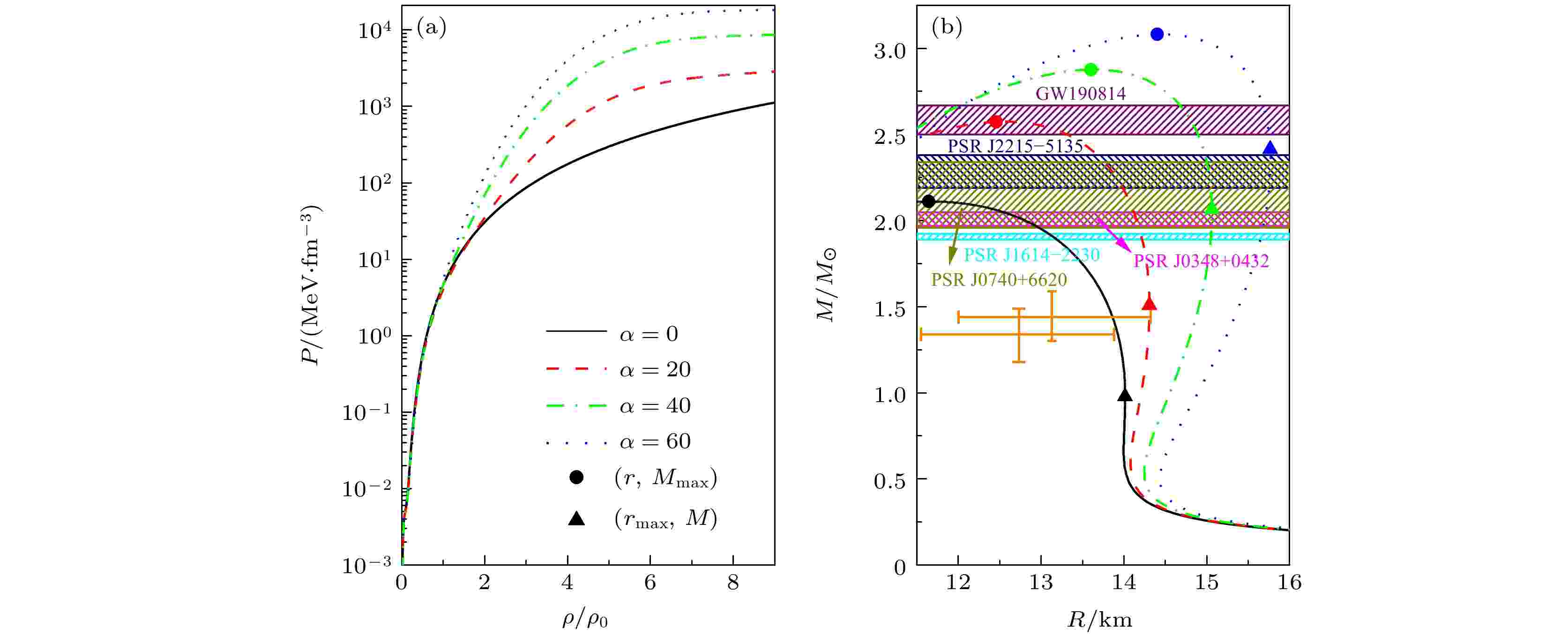
2021, 70 (22): 222601.
doi:10.7498/aps.70.20211051
Abstract +
Research on the properties of neutron stars with strong magnetic fields is of great significance in constraining the equation of state and revealing the real distribution of magnetic fields in neutron stars. The main macroscopic properties of the traditional neutron star matter underβequilibrium condition are studied within the relativistic mean field theory through using the GL91 parameter set by considering the strong magnetic field. It is found that the onset of the strong magnetic field leads to the stiffened equation of state of the traditional neutron star matter. The maximum mass of the traditional neutron star grows from 2.111 M⊙to 3.081 M⊙, the radius of the fixed mass traditional neutron star grows larger with the increase of internal magnetic field, which makes traditional neutron star become less dense. The strong magnetic field can also reduce the surface gravitational redshift and strengthen the moment of inertia of the traditional neutron star matter. In addition, the theoretical ranges of the surface gravitational redshift and the moment of inertia for the four massive PSRs J1614-2230, J0348+0432, J0740+6620 and J2215-5135, and the 2.50 M⊙− 2.67 M⊙compact object in the binary merger event GW190814 are also given. The results show that the ranges of the surface redshift become narrower, while the scopes of the moment of inertia widen as the magnetizing field increases in the five stars.
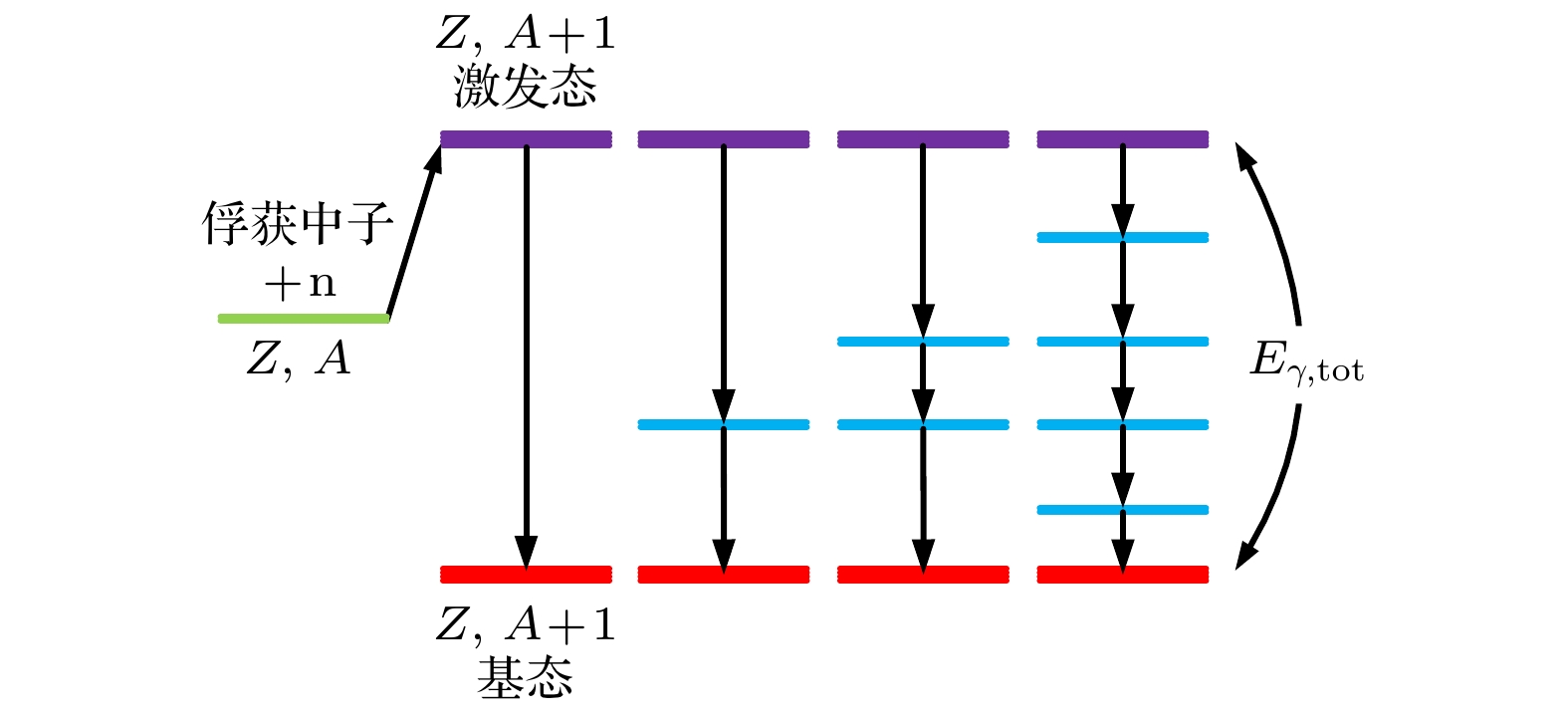
EDITOR'S SUGGESTION
2021, 70 (22): 222801.
doi:10.7498/aps.70.20210742
Abstract +
The data of neutron capture cross section are very important for the research of nuclear astrophysics, advanced nuclear energy development. Owing to the limitation of neutron source and detector, the experimental data of neutron capture cross section in an energy range of 1 eV–10 keV were almost blank in China. The first Chinese gamma-ray total absorption facility has been constructed in the key laboratory of nuclear data at China institute of atomic energy, which consists of 40 BaF2detector units. The BaF2crystal shell with a thickness of 15 cm and an inner radius of 10 cm covers 95.2% of the solid angle. On-line measurement method of neutron capture reaction cross section is established on the back-streaming white neutron source of China spallation neutron source by using the upgraded facility. The cross section of197Au neutron capture reaction is measured for the first time under the experimental condition of irregular 30 mm neutron beam spot. The measured position of resonance peak is well consistent with the relevant data of ENDF evaluation database, which verifies the reliability of the measurement device and measurement technology, and thus laying the foundation for the acquisition of high precision cross section in future.
ATOMIC AND MOLECULAR PHYSICS
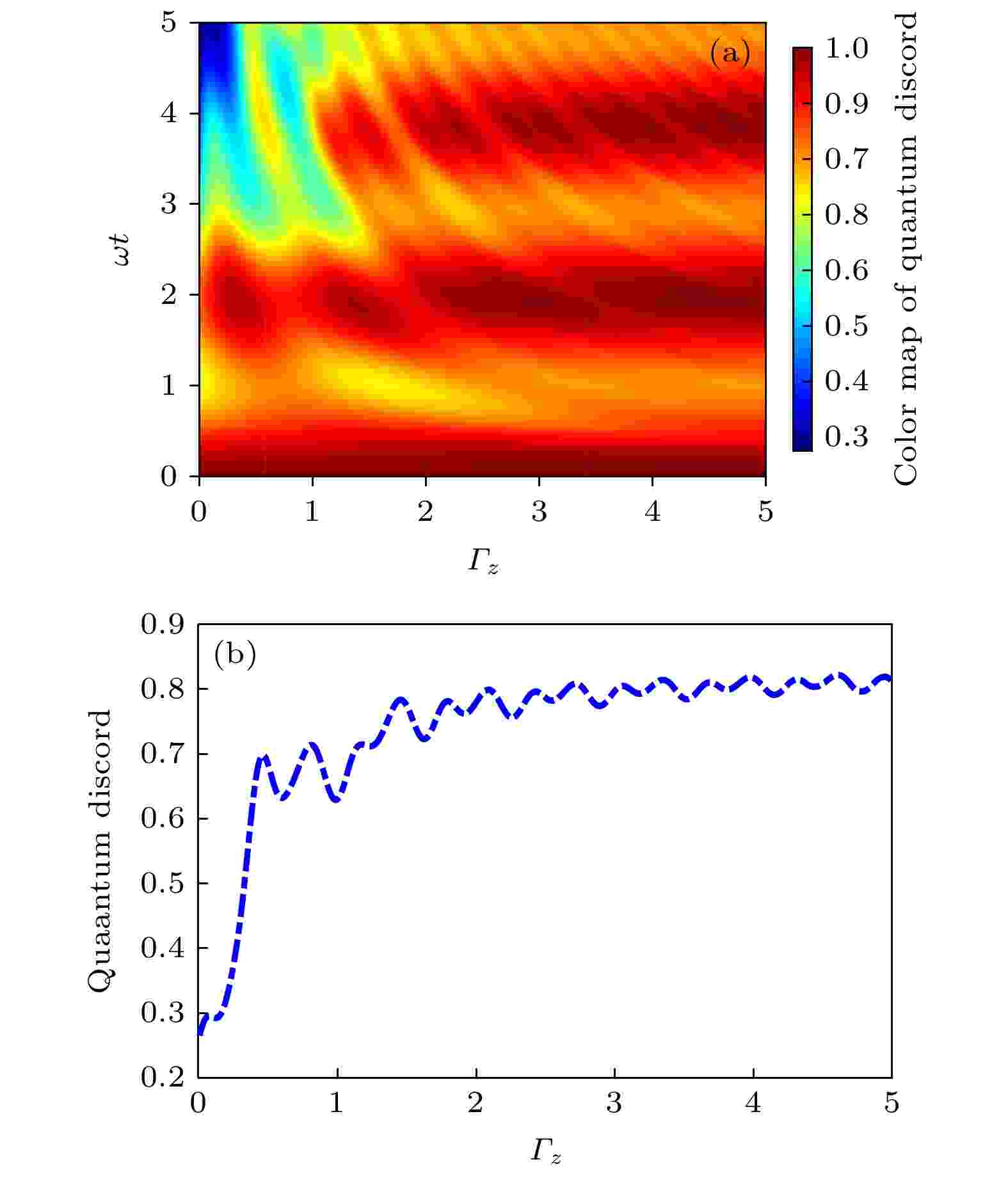
2021, 70 (22): 223401.
doi:10.7498/aps.70.20211277
Abstract +
Since the discovery of symmetric helical interactions in the spin-orbit coupled single-band Hubbard model by Moriya and Kaplan, Shekhtman, Entin, Aharony et al. have successfully used this non-negligible symmetric helical exchange interaction to explain the weak ferromagnetism of La2CuO4. By using the non-Markovian quantum state diffusion method, the quantum discord of non-Markovian dynamics in the spin chain system that has Kaplan–Shekhtman–Entin-Wohlman–Aharony interactions and Dzyaloshinskii-Moriya interactions is studied. The effects of Kaplan–Shekhtman–Entin-Wohlman–Aharony interaction on the quantum discord under different external magnetic fields at zero and finite temperatures are discussed. The results show that the quantum discord in the system can be increased via the increasing of Kaplan–Shekhtman–Entin-Wohlman–Aharony interaction in the case of zero or uniform magnetic field, while the case is opposite under the nonuniform magnetic field. More importantly, the ideal discord state can be obtained by modulating the uniform magnetic field and Kaplan–Shekhtman–Entin-Wohlman–Aharony interaction. Moreover, the Markovian case and the effect of temperature on the quantum discord are also discussed, respectively.

2021, 70 (22): 223601.
doi:10.7498/aps.70.20202011
Abstract +
In this study, two kinds of gas cluster ion beam energy modes with different ion dose ratios are proposed to improve the traumatic surface of n-Si (100) single crystal. In mode1, low-dose high-energy clusters and high-dose low-energy clusters are used, while in mode2, high-dose high-energy clusters and low-dose low-energy clusters are used. The results show that the flattening effect of mode 1 is better than that of mode 2, and the root mean square roughness of mode 1 and mode 2 are 0.62 nm and 1.02 nm, respectively. This is because in multi-level energy mode 2, high-dose high-energy clusters are used to bombard the target surface in the early stage, so that more ion damages will be left after high-energy cluster bombardment. In the later stage, low-dose low-energy clusters can only remove part of the ion damages, and the repair strength is not strong enough. In multi-level energy mode1, we first use low-dose high-energy clusters to bombard the surface of the target, so that the high-energy clusters can quickly remove the shape objects with high protrusion on the sample surface, and in the low-dose mode, it will not leave too many ion damages, which is conducive to the later repair. In the first stage of multi-level energy mode, high-dose low-energy clusters are used to bombard the target surface, which can not only reduce the ion loss, but also increase the time for low-energy clusters to repair ion damages, thereby yielding the optimal flattening effect. In order to verify the relationship among the damage removal, ion damage degree and cluster energy, a single energy cluster bombardment experiment with mechanical damage is carried out before the multi-level energy mode modification is studied. The results show that when the cluster ions are accelerated at 15 kV high voltage, the scratch removal efficiency is highest, and the surface scratch is very shallow, but the decease of roughness is not obvious; when the cluster ions are accelerated at 8 kV and 5 kV, the sample surface becomes fine and the remaining ion damages are least. At the same time, a comparison of the target bombarded by the multi-level energy mode 1 clusters with that by the single energy clusters shows that the multi-level energy mode can obtain a smoother target surface than the single 15 keV high-energy cluster treatment; the multi-level energy mode can better remove scratches and other wounds than the single 5 keV low-energy cluster treatment. Multistage energy mode 1 integrates the advantages of high and low energy clusters, thereby achieving the best flattening effect.
ELECTROMAGNETISM, OPTICS, ACOUSTICS, HEAT TRANSFER, CLASSICAL MECHANICS, AND FLUID DYNAMICS

2021, 70 (22): 224201.
doi:10.7498/aps.70.20210704
Abstract +
In this paper, a porous silicon-calcium fluoride hybrid plasmonic waveguide (PS-CaF2HPW) with an asymmetric silver film is studied. The PS-CaF2HPW is composed of a PS strip waveguide deposited with asymmetric CaF2and Ag thin film layers on an SiO2substrate. In the mid-infrared (MIR) region, the mode characteristics and waveguide sensitivity of the mode in the PS-CaF2HPW are simulated by using the finite element method (FEM). The results show that there are two fundamental modes (PM 1 and PM 2) with different polarization states in the PS-CaF2HPW. The real part of the effective refractive index (Re(neff
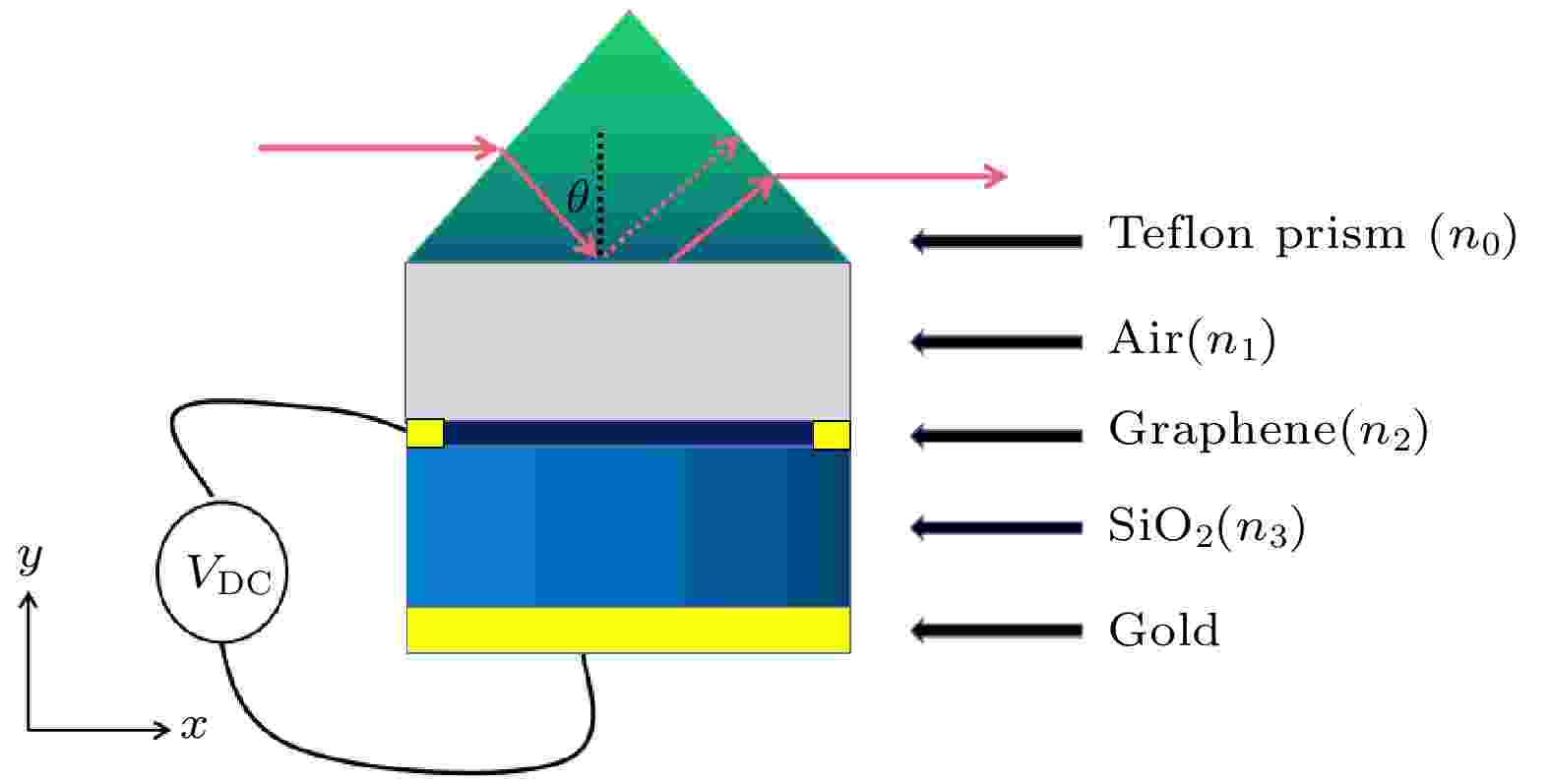
2021, 70 (22): 224202.
doi:10.7498/aps.70.20210445
Abstract +
The active modulation of the amplitude and phase of terahertz wave has been widely adopted in terahertz functional devices. The current metal-insulator-metal metasurface structure combined with two-dimensional materials such as graphene can realize dynamic control of terahertz amplitude/phase, but it has some disadvantages such as less freedom of control (voltage or light intensity), complex processing technology and high price of metasurface structure. In this article, we propose a prism-coupled matel-insulator-graphene (MIG) phase regulation structure. This structure can not only control the phase by adjusting the Fermi level in the usual way, but also change the intrinsic loss and radiation loss of the structure by adjusting the thickness of the air gap and the number of layers of pre-spread graphene, so that the phase of the structure can be controlled, which is determined by the difference between intrinsic loss and radiation loss of the fabric, which is closely related to this structure staying in the under-coupling/over-coupling state. The adjustment of the structural phase can also lead the magnitude of the terahertz Goos–Hänchen(GH) displacement and its positive sign and negative sign to be selected. Furthermore, it is shown that the under-coupling state and the over-coupling state of the structure have an important effect on the coincidence of the Goos–Hanchen (GH) displacement. The results show that by dynamically adjusting the thickness of the air gap and the Fermi level of graphene, and changing the eigenloss and radiation loss of the system, the phase regulation can be achieved. Finally, the transition from overdamped to underdamped state is realized. In this physical process, the GH displacement of the system will also change obviously. This paper puts forward the structure of the process with simple processing technology (no need to microstructure), tunable high degrees of freedom (available graphene Fermi level and air gap dynamic regulation, also could be regulated and controlled by controlling the graphene layers) in comparison with the phase modulator of metal-insulator-metal super surface structure. The results of this paper open up a new way of developing the multi-parameter tunable terahertz sensor components.
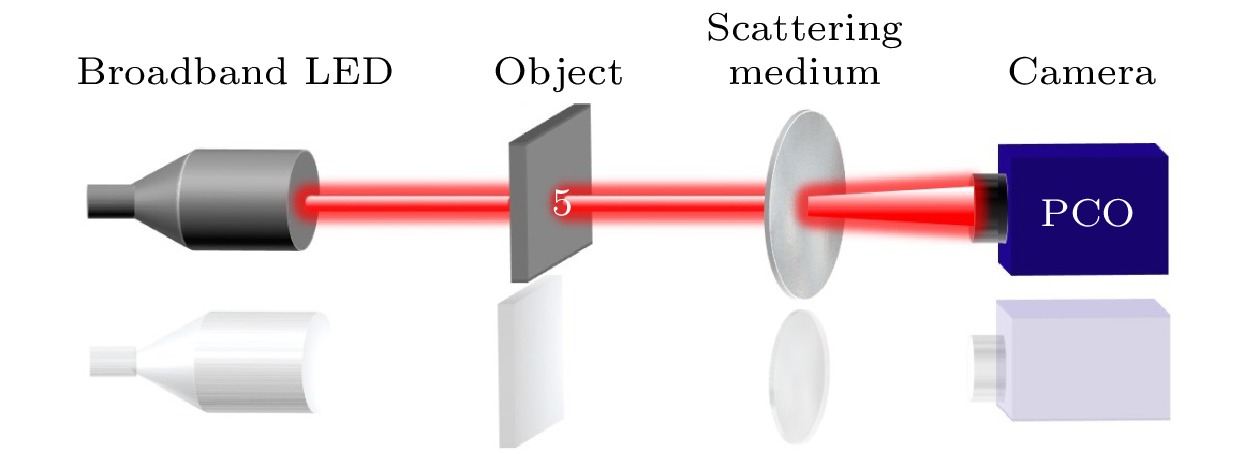
EDITOR'S SUGGESTION
2021, 70 (22): 224203.
doi:10.7498/aps.70.20210703
Abstract +
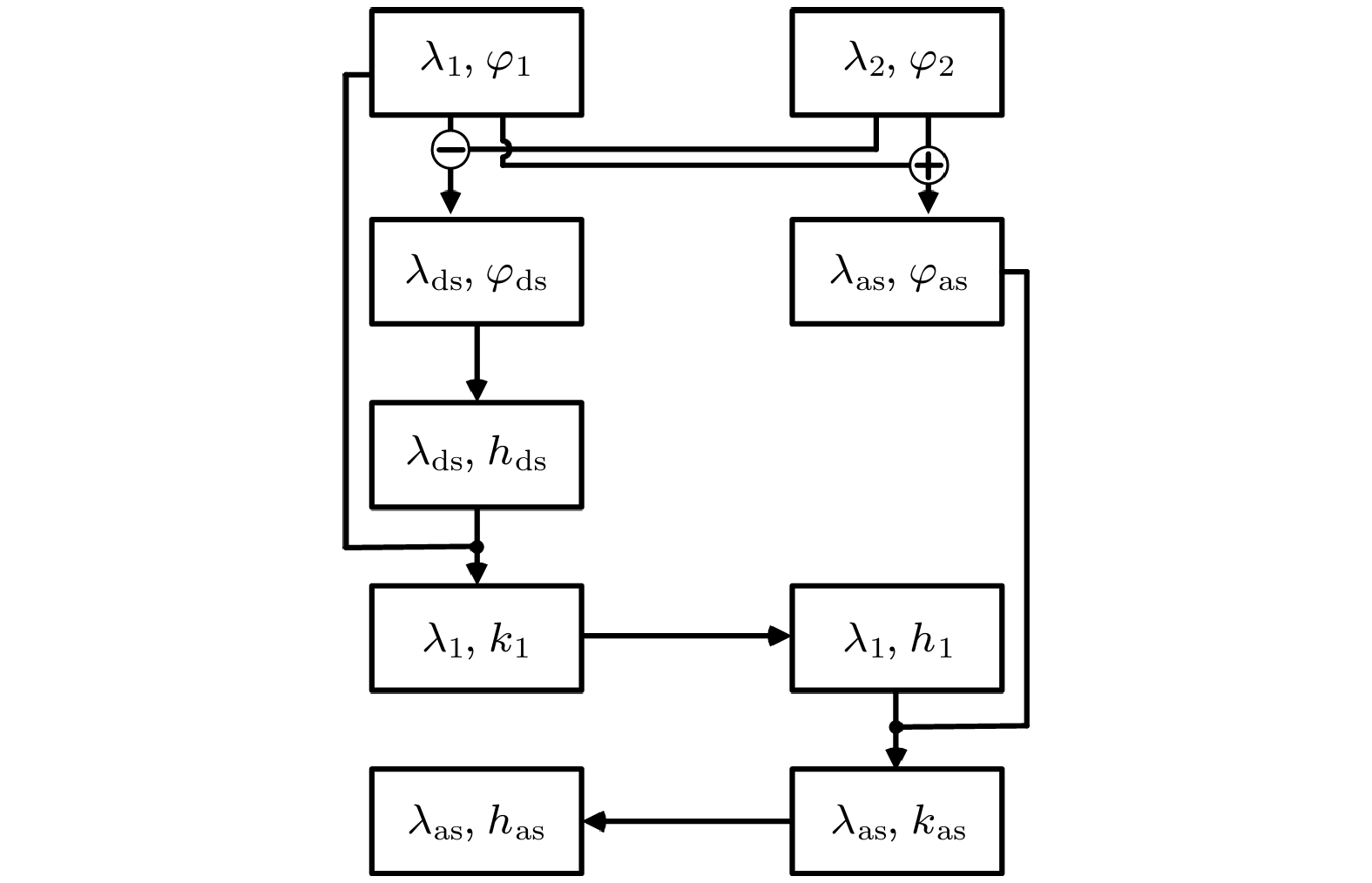
2021, 70 (22): 224204.
doi:10.7498/aps.70.20210669
Abstract +
Dual-wavelength digital holography can expand the unambiguous measurement depth in phase unwrapping by using a differential synthetic wavelength which is longer than the single illumination wavelength. However, the phase noise is significantly amplified due to the magnification of the differential synthetic wavelength, resulting in a lower measurement accuracy. On the other hand, a lower noise level can be achieved by using additive synthetic-wavelength which is shorter than the single illumination wavelength. However, the corresponding unambiguous measurement depth is greatly reduced due to the phase ambiguity. In this case, combining the merits of the differential synthetic-wavelength and the additive synthetic-wavelength, different low noise phase unwrapping algorithms have been developed in recent years. However, these algorithms are complex and time consuming because they need to calculate multiple intermediate variables or search for the constrained boundary conditions in two-dimensional space. Therefore, in this paper, we develop a hierarchical phase unwrapping algorithm by using the two synthetic wavelengths for dual-wavelength digital holography to realize low noise and fast unambiguous measurement with large depth. In this algorithm, the unwrapped phase difference obtained by the differential synthetic wavelength is used to guide the wrapped phase of one single wavelength to realize phase unwrapping, and then the optical path difference obtained by the single-wavelength unwrapped phase is employed to guide the wrapped phase sum, and thus realizing phase unwrapping. As a result, the phase noise is attenuated and the depth sensitivity is preserved for dual-wavelength phase unwrapping. After theoretical analysis, a series of simulation experiments is carried out on the reconstructed quality, anti-noise characteristics and speed through comparing with state-of-the-art dual-wavelength phase unwrapping algorithms, including the conventional algorithm, the linear programming algorithm and the direct linear programming algorithm. In this case, a flipping dual-wavelength common-path digital holography with orthogonal carrier is built to acquire multiplexed off-axis hologram in one shot and illustrate the operation of the algorithm with circular step target, and stability test of the setup. Both the simulation and experimental results show that the proposed method can be simplified and deterministic, resulting in a lower noise phase unwrapping in a time of 20.5 ms for a phase map of one megapixel. We expect that the proposed method can have practical applications in measurement that requires high accuracy, fast speed, and large depth.
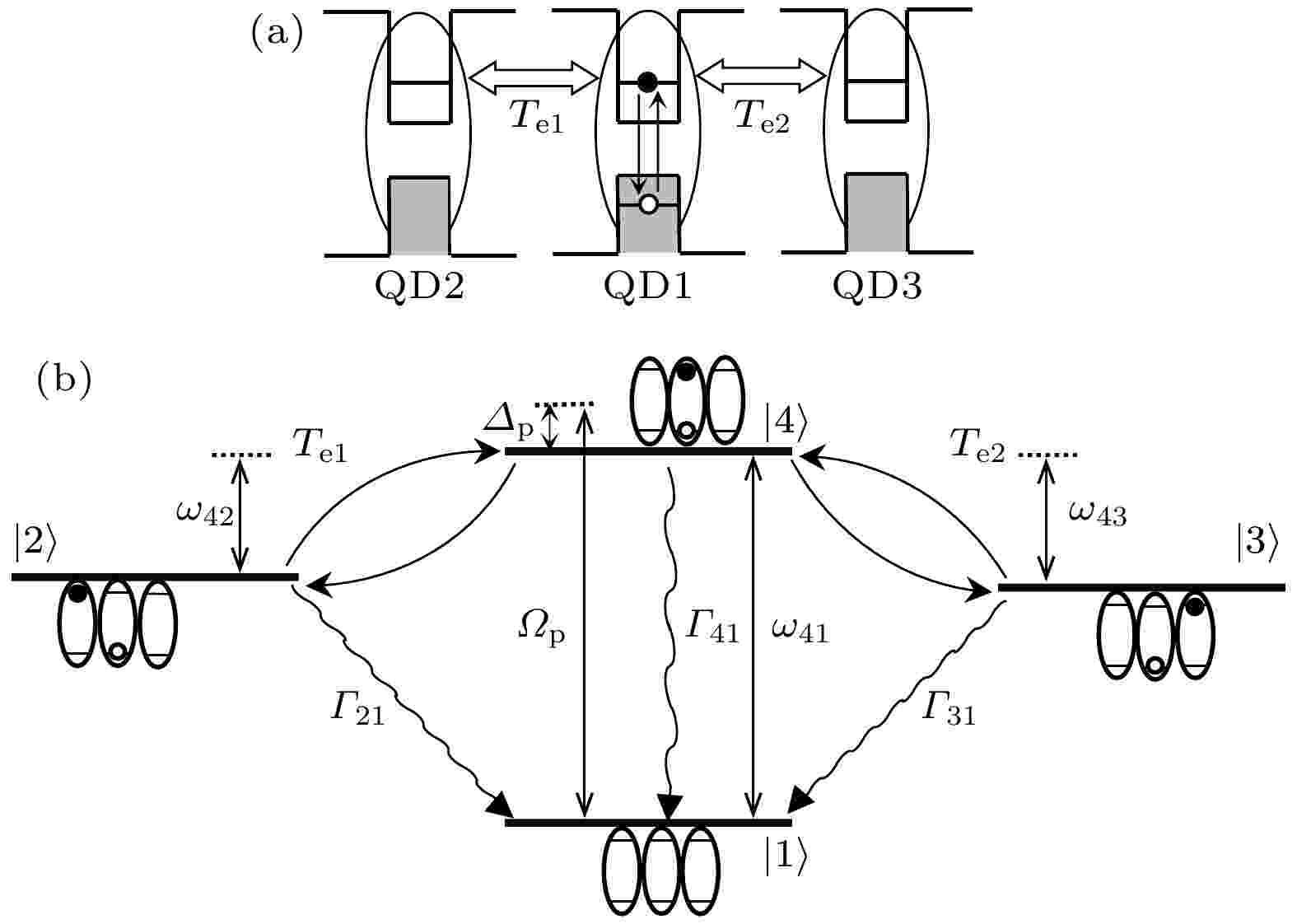
2021, 70 (22): 224205.
doi:10.7498/aps.70.20210942
Abstract +
The influence of high-order effects on the stability of the optical soliton in a semiconductor three-quantum-dot molecular system under the excitation of narrow pulse probe light is analyzed analytically by using the multi-scale method. The results show that optical soliton described by the standard nonlinear Schrödinger equation will have a large attenuation in the propagation process, while the optical soliton described by the high-order nonlinear Schrödinger equation has relatively good stability. In addition, numerical simulations of the interaction between optical solitons show that the amplitudes of the two optical solitons described by the standard nonlinear Schrödinger equation attenuate rapidly after the collisions and radiation of more serious dispersion waves, while the shapes of the two optical solitons described by the high-order nonlinear Schrödinger equation hardly changes after the collision. This is mainly because when the incident probe light pulse is narrow enough, the system must be described by a higher-order equation. The physical reason is that the higher-order effects in the equation, including non-instantaneous effects and third-order dispersion effects, cannot be ignored or treated as perturbations. This kind of stable optical soliton has potential application value for future optical information processing and transmission technology.
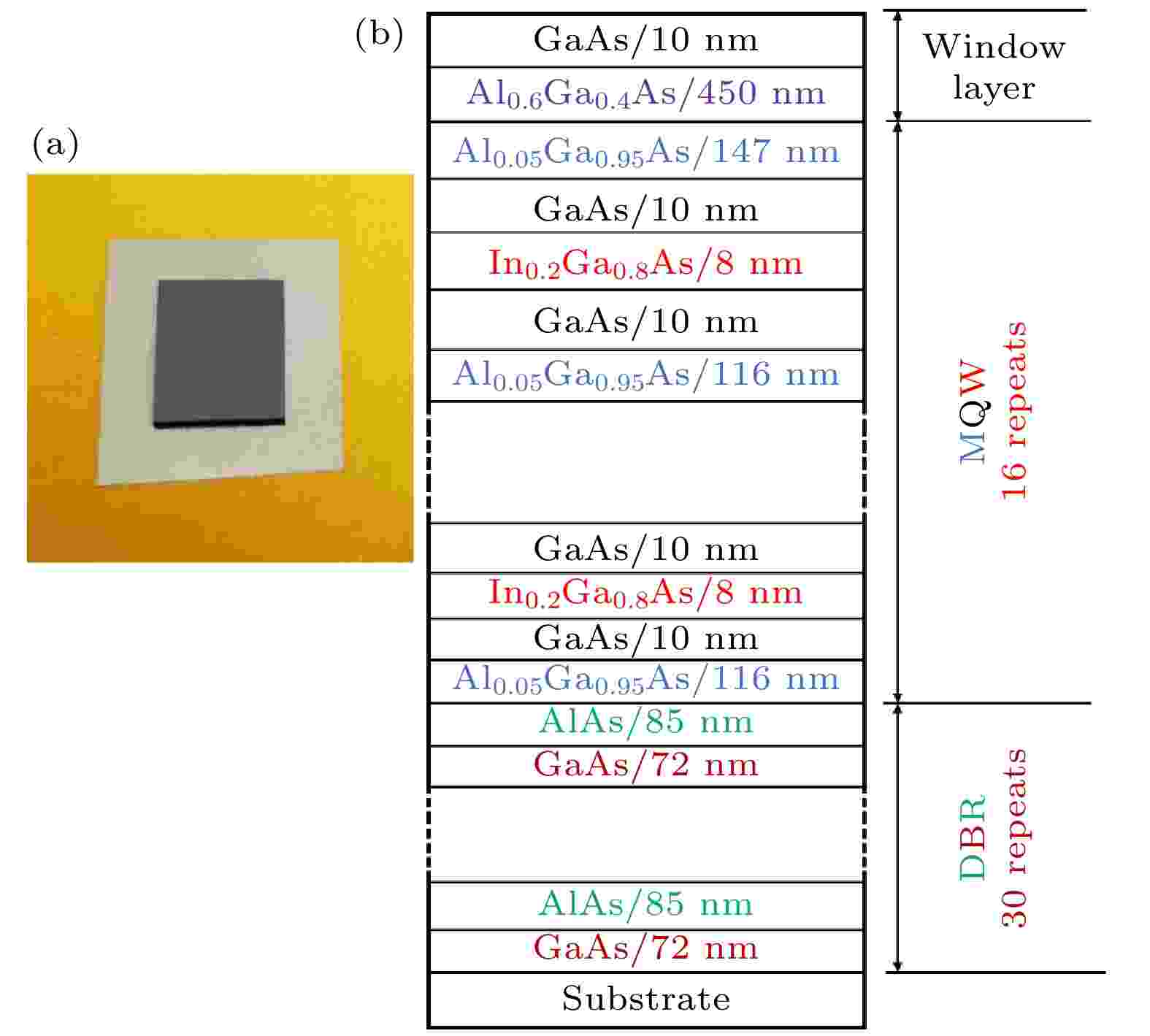
2021, 70 (22): 224206.
doi:10.7498/aps.70.20210888
Abstract +
A broadband continuously tunable semiconductor disk laser is reported in this paper. The active region of gain chip is composed of InGaAs multiple quantum wells with resonant periodic gain structure, and its fluorescence peak wavelength is around 965 nm. Using the wideband characteristics of the quantum wells in gain chip, along with the simple linear cavity that is formed by a high reflectivity external mirror, the laser has a low cavity loss and a wide tuning range. The continuously tunable laser wavelength can be obtained by inserting birefringent filters with different thickness into the cavity. When the thickness of the birefringent filter is 2 mm, the wavelength tuning range of the laser is 45 nm, the maximum output power is 122 mW, and the beam qualityM2factors in theX-and theY-directions are 1.00 and 1.02, respectively. The temperature characteristics of the surface-emitting spectra of gain chip and the narrowing effect of birefringent filter on laser linewidth h are also discussed.

2021, 70 (22): 224207.
doi:10.7498/aps.70.20210293
Abstract +
In this paper, the 795-nm vertical cavity surface emitting laser (VCSEL) with sub-wavelength grating coupled cavity is proposed and designed based on the theory of resonant coupled cavity, and the mechanism of multi-cavity coupling linewidth narrowing and influencing factors are analyzed in detail by using the COMSOL software finite element method. The analysis results show that when photonic resonance takes place in a multi-coupled cavity, the grating-coupled cavity with reasonable design parameters and the multi-coupled cavity formed by precisely controlled lasers are phase-matched, which greatly strengthens the narrowing effect of the spectral linewidth resonance, and a 795-nm VCSEL laser with high beam quality and ultra-narrow linewidth output is obtained, finally. Theoretical results display that the reflection spectrum cold cavity linewidth Δλc of the coupling cavity with a thickness of 180nm of the spacer layer can reach 7 pm, which lays a theoretical foundation for achieving a kHz-level spectral linewidth output of VCSEL lasers.
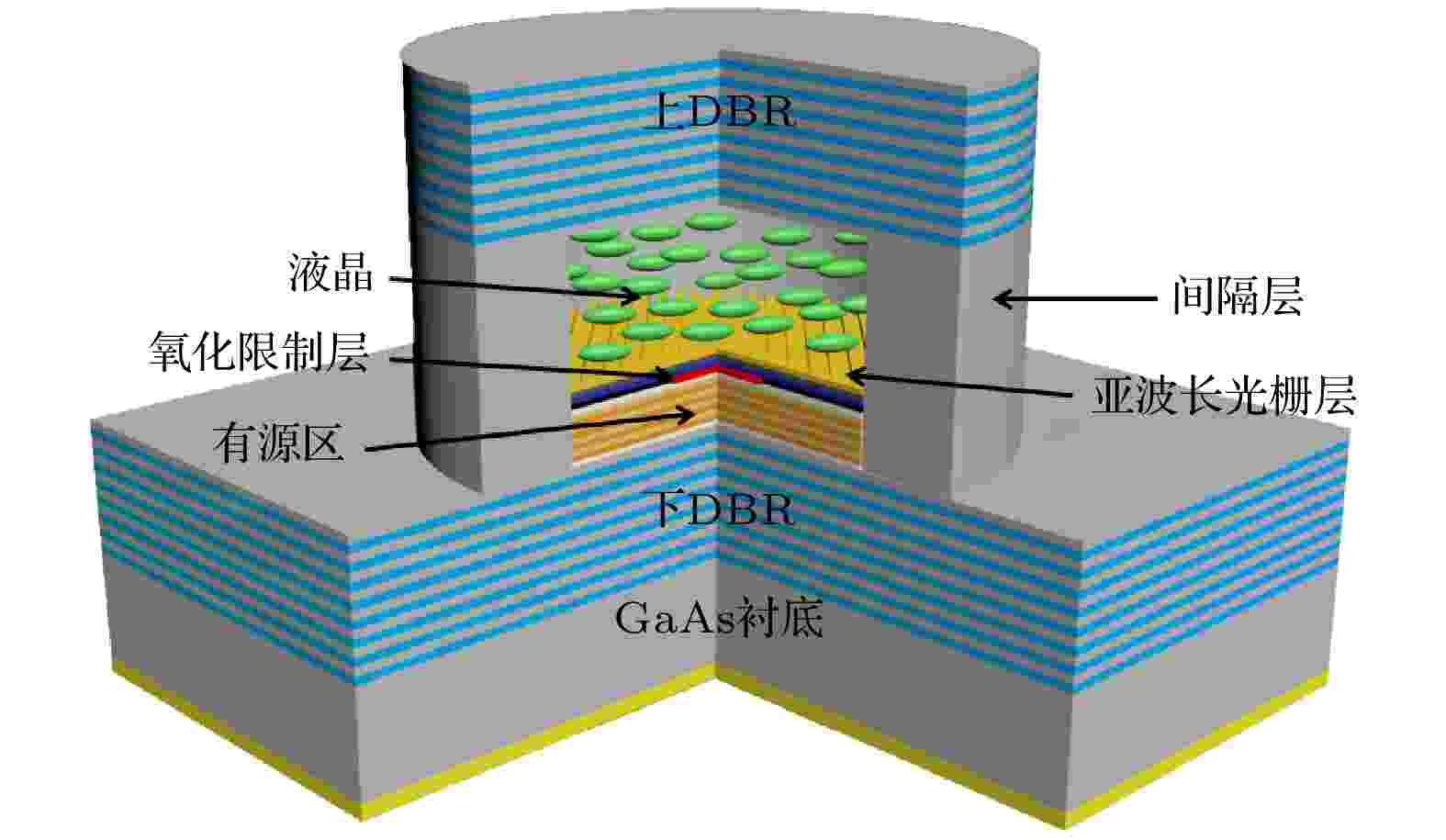
2021, 70 (22): 224208.
doi:10.7498/aps.70.20210957
Abstract +
With the rapid development of information technology, a wavelength-tunable vertical cavity surface emitting laser (VCSEL) is urgently needed as an optical signal source in dense wavelength division multiplexing (DWDM). Liquid crystal tunable VCSEL realized by utilizing the birefringence characteristics of liquid crystal has the advantages of stable polarization, high reliability, continuous wavelength tuning. In this paper, a liquid crystal tunable VCSEL structure based on intracavity sub wavelength grating is designed, and the influence of liquid crystal layer and sub wavelength grating on the wavelength tuning characteristics of VCSEL are analyzed and studied in depth. The results show that the thickness of the liquid crystal layer in the tunable VCSEL structure not only affects the wavelength tuning range, but also determines the mode hopping in the tuning process. In addition, an effective refractive index antireflection layer is formed by designing the subwavelength grating structure, and the refractive index difference between the liquid crystal layer and the semiconductor layer is optimized to further improve the wavelength tuning range and tuning efficiency. When the center wavelength is 980 nm, the tuning range is increased by 42%, reaching 41 nm, and the wavelength tuning efficiency is increased by 41%. It provides a new method of designing the VCSEL laser with high beam quality and continuous wavelength tuning.

2021, 70 (22): 224209.
doi:10.7498/aps.70.20210695
Abstract +
Frequency doubling of second-Stokes in an acousto-optic Q-switched Nd:YVO4cascaded self-Raman cavity is demonstrated to achieve a narrow pulse-width red laser. A three-stage bonded YVO4/Nd:YVO4/YVO4crystal is designed by comprehensively considering the improvement of thermal effect, the performance of fundamental frequency laser and Raman conversion, to improve the Raman efficiency and output power. An LBO crystal cut for critical phase matching at room temperature is selected and used as a nonlinear optical crystal for realizing the frequency doubling of second- Stokes wave. Its phase matching angle (θ= 86.0°,φ= 0°) is very close to the non-critical phase matching angle and has a small walk-off angle, which is beneficial to the realizing of the high conversion efficiency of frequency doubling. In the experiment, the beam waist position of the pump light and the repetition frequency of the acousto-optic Q-switcher are optimized. Under an incident pump power of 14.2 W and a repetition frequency of 60 kHz, the highest average output power of 1.63 W and conversion efficiency of 11.5% are obtained for the 657 nm red laser emission. The pulse width of 657 nm red light is 11.5 ns at the maximum output power, which is much narrower than that generated by frequency doubling of ordinary neodymium-doped laser at a waveband of 1.3 μm. The result shows that the frequency doubling of the acousto-optic Q-switched Nd:YVO4cascaded self-Ramanlaser can take advantage of the pulse-width compression characteristics of Raman process to achieve a narrower pulse-width red light laser output.
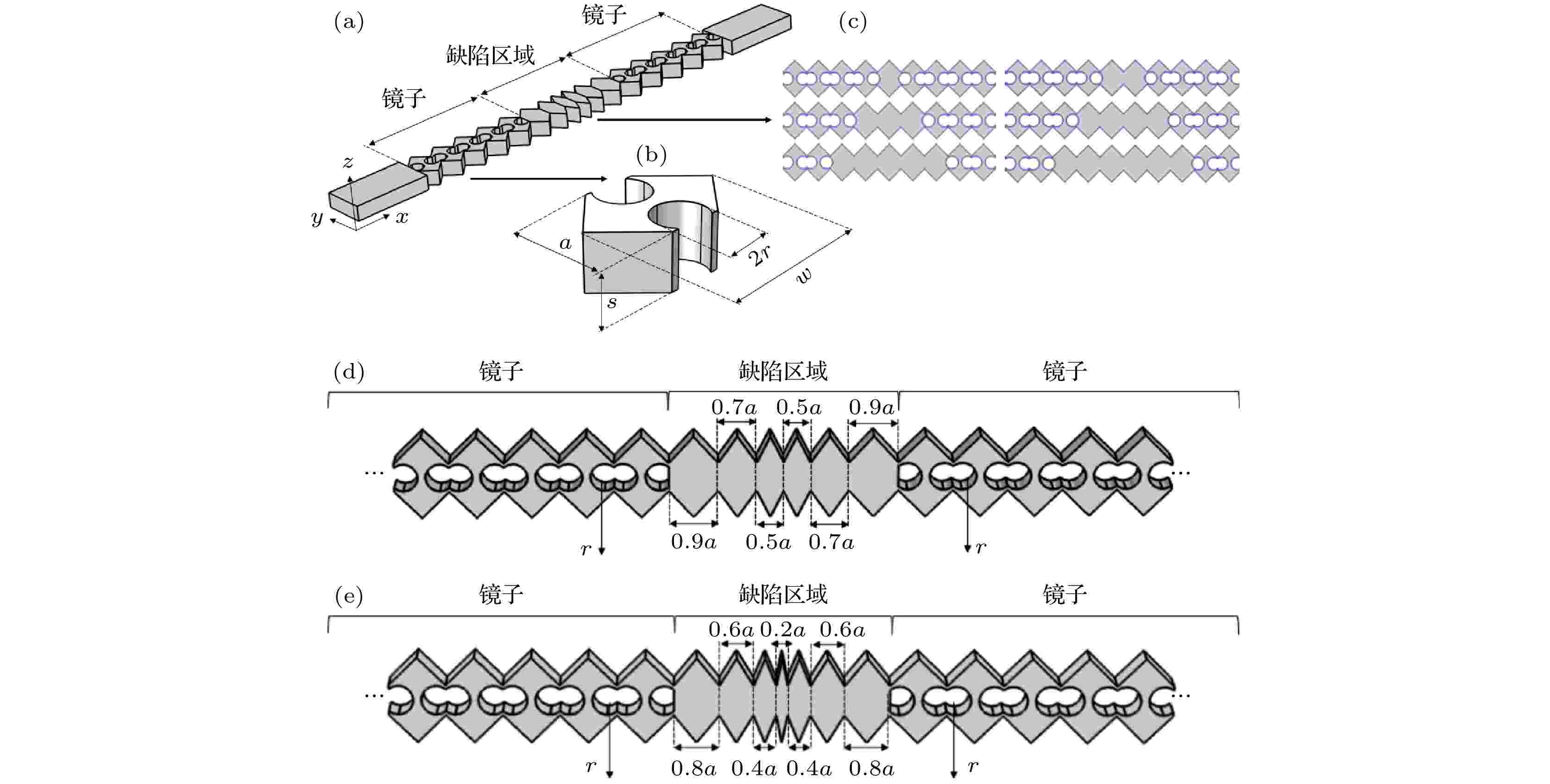
2021, 70 (22): 224210.
doi:10.7498/aps.70.20210925
Abstract +
Optomechanical crystals can simultaneously modulate elastic waves and electromagnetic waves as well as localizing phonons and photons to enhance the acousto-optic interaction. In this work, a new type of optomechanical crystal nanobeam cavity is designed by periodically arranging the unit cells with double holes on both sides of a hexagonal prism. Considering the moving boundary effect and the photoelastic effect as well as using the first-order electromagnetic perturbation theory and the optomechanical coupling coefficient calculation method, the optomechanical coupling rate of the structure is calculated. The result shows that the overlap between the optical mode and the mechanical mode can be improved by changing the number of defects and optimizing the geometric structure. For the nanobeam cavity structures with different numbers of the like defects, the number of defects will only affect the action mode of the moving boundary effect and photoelastic effect in the optomechanical coupling rate, but will not change the coupling rate too much. In particular, the optomechanical coupling rate of the single defect optomechanical crystal nanobeam cavity can reach –1.29 MHz, and the equivalent mass is 42.6 fg. Moreover, the designed structure is simple and easy to process and fabricate. The coupling rate of even-symmetric optomechanical crystal nanobeam cavity based on gradient defect can reach 2.25 MHz, and the coupling rate of odd symmetric structure can reach 2.18 MHz, in which the moving boundary effect is dominant. Based on the symmetry analysis of the vibration modes of the optomechanical crystal nanobeam cavity with gradient defects, it is worth noting that only the even symmetrical vibration modes ofx-y,x-zandy-zcan strongly couple with the optical modes. The surface density of the moving boundary effect is calculated and analyzed, and it is found that the surface density of the acoustic resonance mode with high symmetry also possesses high symmetry. However, when the surface density of the moving boundary effect in the defect state appears adjacent to each other and cancels out each other, it will destroy the coupling mode of the moving boundary effect and reduce the coupling rate, whether the symmetry is high or low. In addition, the designed optomechanical crystal nanobeam can also improve the quality factor of the resonant cavity by optimizing the defect structure while maintaining a high optomechanical coupling rate. Therefore, this research provides an effective means to find a structure with high optomechanical coupling rate, and also presents the ideas for designing the space sensors.

2021, 70 (22): 224211.
doi:10.7498/aps.70.20210751
Abstract +
Photonic generation of triangular-shaped waveform with variable symmetry based on dual-polarization modulation is proposed and demonstrated. Based on the external modulation method, a dual-polarization modulator is used to modulate the radio frequency signal to generate the needed optical signal. By setting the modulation index of the modulator and phase shift of phase shifters appropriately, the optical intensity of generated signal can equal approximately the first three terms of the Fourier series expansion of the ideal triangular-shaped waveform, so triangular-shaped waveforms with different symmetry factors can be generated. Most of previous triangular waveform generation schemes generate symmetrical triangular waveform or sawtooth waveform (sawtooth waveform can be regarded as an asymmetrical triangular waveform), and the symmetry factor is not tunable. The tunable range of symmetry factor of triangular-shaped waveform generated by this scheme can reach 0%–100%, which will greatly expand the application range of triangular-shaped waveforms. The root-mean-square error (RMSE) is introduced to measure the similarity between the generated waveform and the theoretical waveform. It can be found that theoretically the triangular-shaped waveform with a symmetry factor in a range from 14% to 86% has a good similarity to the ideal waveform (RMSE < 0.044), and the RMSE of the generated waveform in the simulation is also very close to the theoretical RMSE. Experimentally, the 4GHz triangular-shaped waveforms with different values of symmetry factor (20%–80%) are obtained by using 4GHz radio frequency signal.

2021, 70 (22): 224212.
doi:10.7498/aps.70.20210615
Abstract +
The single-mode fiber (SMF) adaptive coupling device can efficiently and stably couple the space laser into SMF, which plays an important role in the fiber-based free space optical communication (FSOC) technology. Therefore, a novel corrector named adaptive fiber coupler (AFC) is developed and successfully used in the adaptive SMF coupling applications. However, in the FSOC system under long-range turbulent atmosphere, the closed loop performance of AFC will be seriously disturbed by the photoelectric conversion noise. This problem is studied in depth in this paper. The operational principle of the photoelectric conversion noise is analyzed, and the corresponding evaluation index isgiven. Furthermore, The numerical simulation experiments are conducted to study the specific influence of the photoelectric conversion noise. The results show that the averaged closed-loop coupling efficiency, control accuracy, and control bandwidth of AFC are seriously affected. According to the results, the empirical formula is given. This formula can be used to calculate the optical and electrical parameters that the AFC device should meet under the condition of strong noise interference. The theoretical and simulation results in this paper can provide a theoretical basis for designing the AFC device under long-range turbulent atmosphere.
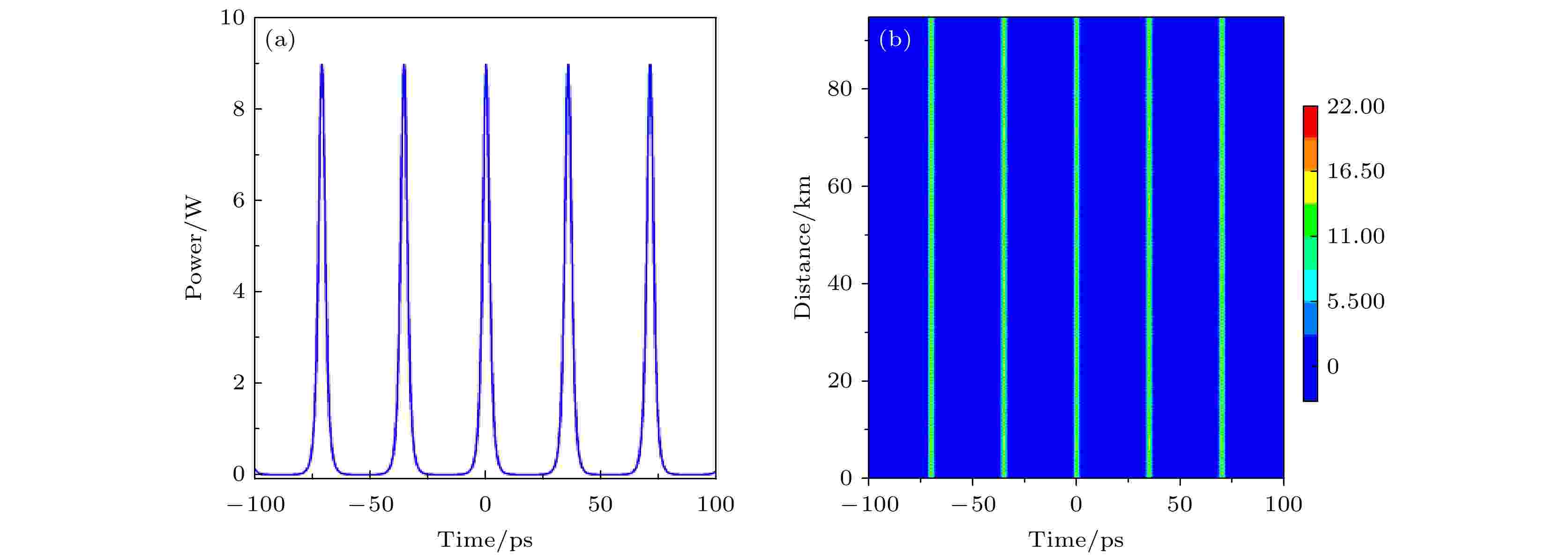
EDITOR'S SUGGESTION
2021, 70 (22): 224213.
doi:10.7498/aps.70.20210959
Abstract +
In this paper, we discuss the pulse dynamics of rational fraction based on the Peregrine rogue wave solution of nonlinear Schrödinger equation. Based on its properties and using the spectral filtering, the amplification of optical pulse train is proposed. The results show that the combination of a continuous-wave pump and a spectral filter positioned in fiber can act as an amplifier. And the idea is applied to the long-haul transmission of optical pulse train and four amplification periods are demonstrated. Particularly, the amplification of limited number of pulses can be realized by rectangular pulse truncation and the number of pulses can be adjusted by changing the parameters. The periodically modulated plane wave that can be controlled experimentally is taken as an input which can produce the maximumly amplified zero background pulse train and the location of maximumly amplified pulse train relates to the modulation intensity. The location of the maximumly amplified zero background pulse train changes with the modulation intensity. The results show that for two input signals with different frequencies, they can realize the amplification with the above method. By changing the modulation intensity the simultaneous amplification for two signals with different frequencies can be realized.
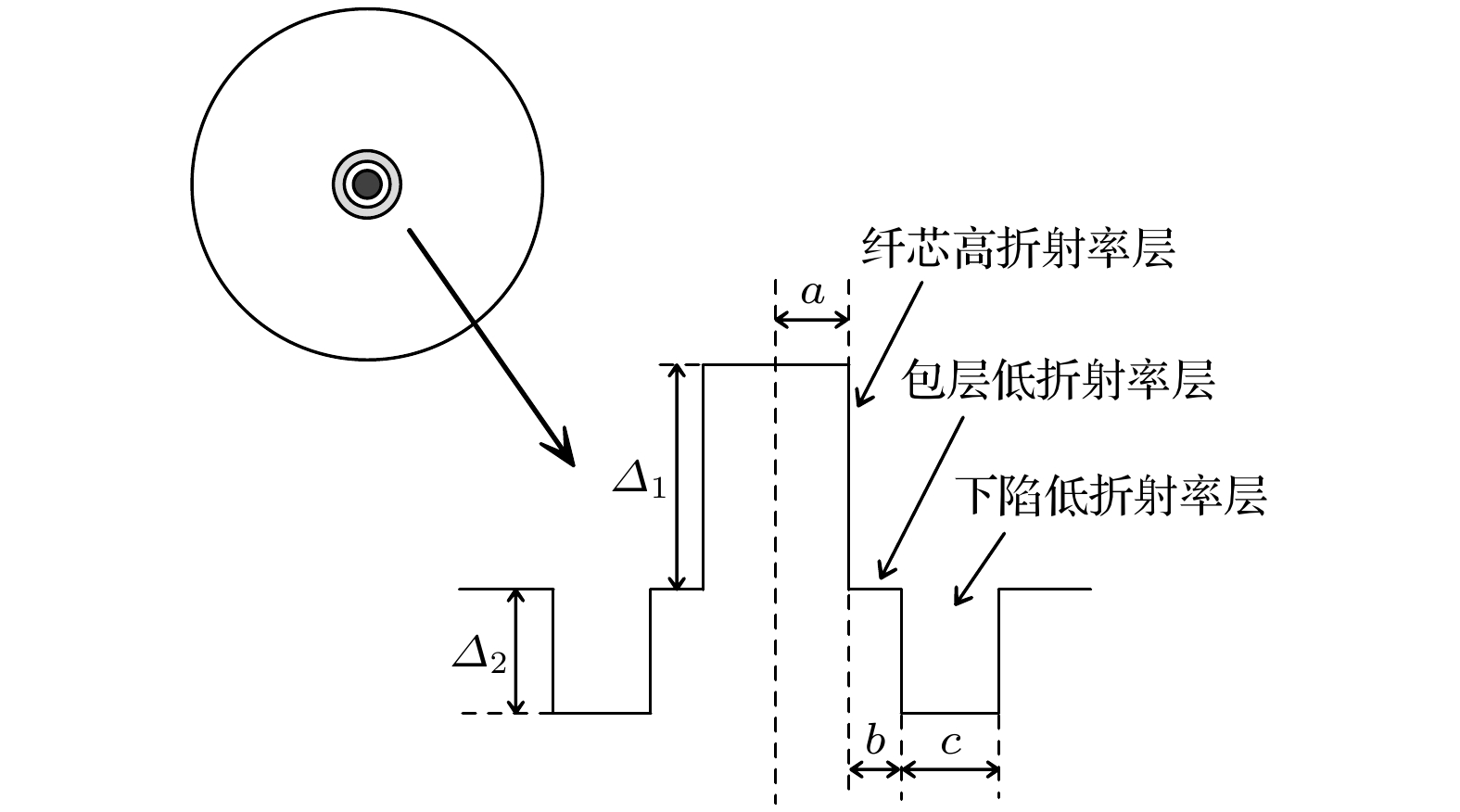
2021, 70 (22): 224214.
doi:10.7498/aps.70.20210410
Abstract +
A three-layer-core single-mode large-mode-area fiber with low bending loss is investigated in this paper. The three-layer structure in the core which is comprised of core-index layer, cladding-index layer and depression-index layer, can achieve large-effective-area Aeff while maintaining low-bending-loss without deteriorating cutoff behaviors. The large-mode-area of 100–330 μm2can be achieved in the fiber. The effective area Aeff can be further enlarged by adjusting the layer parameters. Furthermore, the bending property can be improved in this three-layer-core structure. The bending loss can decrease by 2–4 orders of magnitude compared with the bending loss of the conventional step-index fiber with the same Aeff. These characteristics of three-layer-core fiber suggest that it can be used in large-mode-area wide-bandwidth high-capacity transmission, or high-power optical fiber laser and amplifier in the optical communications, which can be conducive to studying the basic physical layer structure of big data storage, reading, calculation and transmission applications and so on.
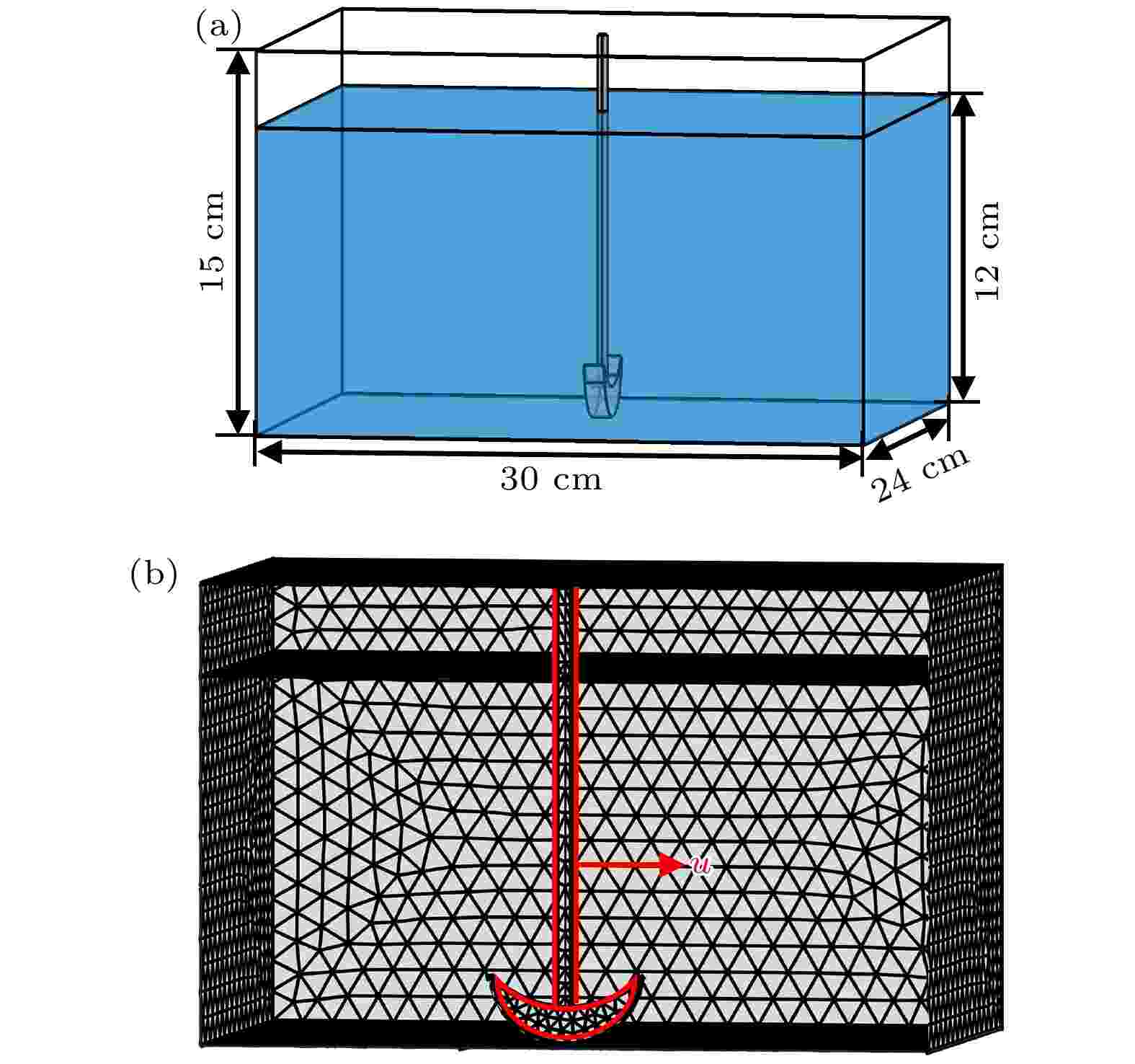
2021, 70 (22): 224301.
doi:10.7498/aps.70.20211244
Abstract +
In order to further investigate the effect of the vortex induced by mechanical agitation on the ultrasonic degradation rate of organic solution, with water used as a medium, the acoustic field distributions at different stirring speeds are simulated by using the simulation software COMSOL. The simulation of acoustic field distribution is divided into two steps. First, the flow field distribution in the cleaning tank is obtained by using the Navier-Stokes equation and the continuity equation under the corresponding boundary conditions. Next, the velocity and pressure in the flow field are substituted into the acoustic wave equation to obtain the acoustic field distribution. In addition, the instantaneous acoustic pressure obtained by simulation is fitted by Origin, and the fitting curve shows a good sinusoidal shape. Then, substituting the fitting function into the Keller-Miksis equation, the variations of radius of the cavitation bubble with time at different stirring speeds are obtained. Finally, the temperature of the cavitation bubble is calculated from the obtained radius. The results show that mechanical agitation increases the uniformity of acoustic field distribution and the amplitude of acoustic pressure, and that the bubble temperature is greatly enhanced due to the agitation. At the same time, it is also found that the internal temperature of the bubble first increases with the stirring speed increasing. When the stirring speed reaches 1500 r/min, the temperature begins to decrease with the stirring speed increasing. The temperature inside the cavitation bubble reflects the intensity of acoustic cavitation. The higher the temperature, the greater the intensity of acoustic cavitation will be. Therefore, it can be concluded that the acoustic cavitation intensity will decrease when the stirring speed is too high. Therefore, though mechanical agitation can improve the acoustic cavitation intensity, too high stirring speed can reduce the acoustic cavitation intensity. In order to verify the simulation results, the degradation of methylene blue is performed by ultrasound coupled with mechanical agitation, and the experimental results show that the degradation rate of the solution without mechanical stirring is lowest. The degradation rate of the solution increases with the stirring speed increasing. When the stirring speed reaches 1000 r/min, the degradation rate of the solution is the same as that at 600 r/min, and then decreases with the stirring speed increasing. It can be found that the experimental results are consistent with the simulation results. The simulation results not only theoretically explain why mechanical agitation can improve the ultrasonic degradation rate of organic solution, but also indicate that too high stirring speed can reduce the acoustic cavitation intensity, thus reducing the sonochemical reaction rate. Therefore, the results obtained in this work provide a new idea for further improving the ultrasonic degradation rate by mechanical agitation.
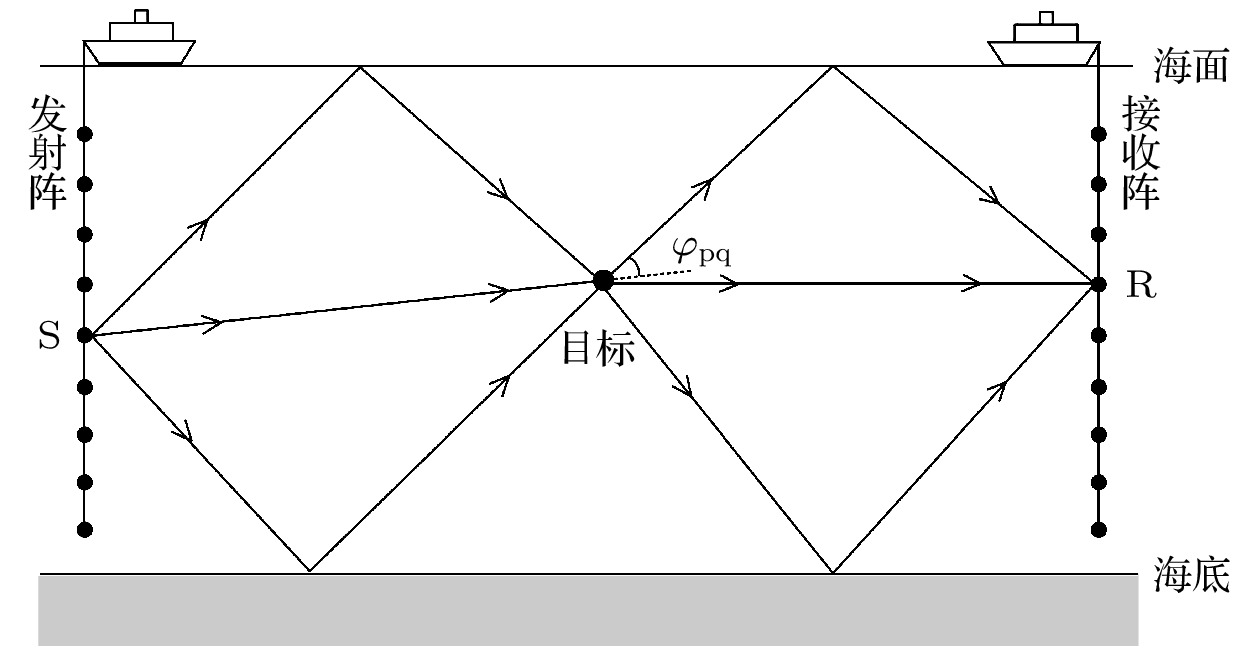
2021, 70 (22): 224302.
doi:10.7498/aps.70.20210277
Abstract +
Forward scattering of the target could cause the amplitude and phase aberration of the received sound field, which received attentions in harbor monitoring and anti-submarine. However, the localization under forward scattering configuration is a challenging task due to the strong direct blast. The method based on sensitive kernel function which exploit the aberration of the received signals is sensitive to the environment mismatch and a localization method based on transfer learning framework is developed. The envelopes of aberrations caused by the forward scattering of intruder are firstly extracted by applying pulse compression technique on the received signals, and then normalized by comparing with the case of intruder absent. The data set near the first arrivals on the normalized aberrations are selected as the learning physical parameters. A convolution neural network is trained with these data generated by the forward scattering model to establish a mapping relationship between intruder’s localization and the aberrations of received signal, thus the localization problem is transformed into classification. In the second step, the parameters of the convolutional pooling layer in the pre-trained model are frozen in the transfer learning procedure, and the parameters of the fully connected layer in the pre-trained model are updated using a small amount of data under the fluctuated environment. Simulation of the localization of ellipsoidal targets with a signal-to-noise ratio of 0 dB under a shallow water environment is performed for a scenario to explore the robustness of the method. The results show that the accurate target localization could be achieved in the case of sound velocity profile mismatch. Also, the method is not significantly sensitive to the target scattering function, sound properties of sediment and deployment of transceivers. The sensitivities to the waveguide amplitude and phase fluctuations are further modeled. The results show that good localization accuracy can be obtained in a relatively stable environment, and results are distinguished between the presence and absence of the target. Since the proposed method is derived by the model and real data, the accurate scattering model and sufficient training data are not significantly necessary. The method may provide a promising way for forward scattering detection.
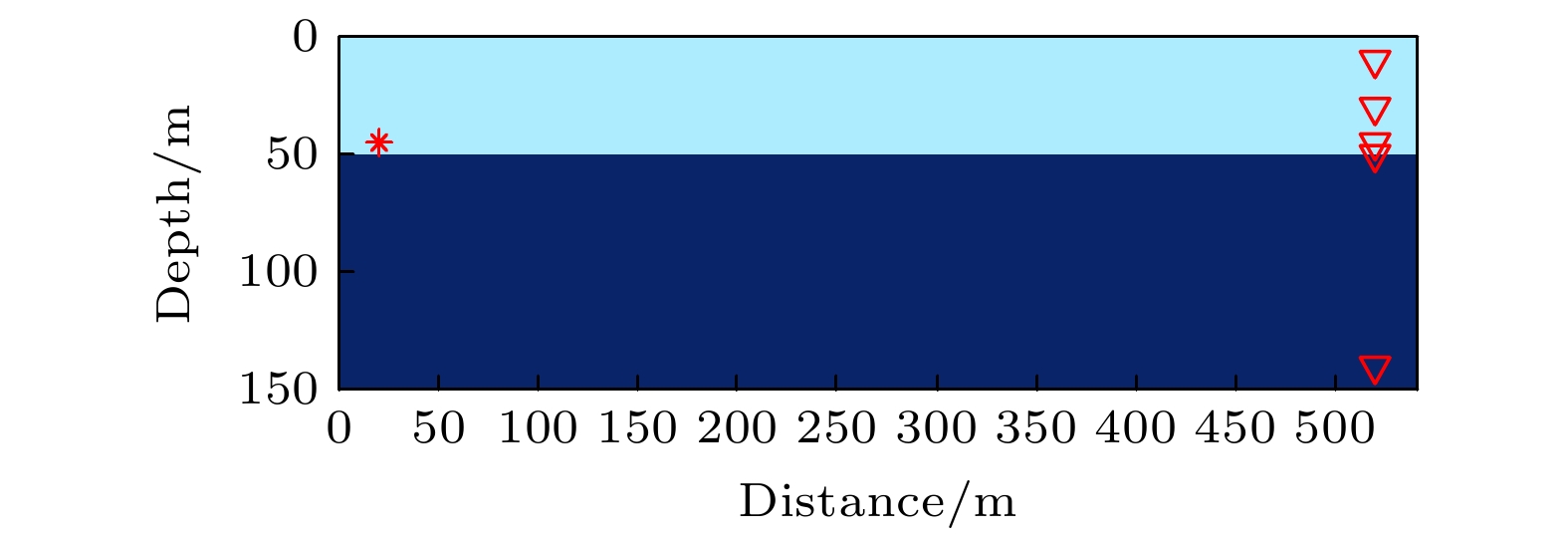
2021, 70 (22): 224303.
doi:10.7498/aps.70.20210634
Abstract +
The studying of the excitation and propagation characteristics of seabed seismic waves in a complex marine environment is of great significance in investigating seafloor physical and mechanical properties and exploring resources. At present, the research of time-domain seabed seismic waves is mostly restricted in a marine environment with horizontal stratification, but the actual geological conditions of seafloor are relatively complex, and the numerical solutions obtained under ideal assumption are quite different from those in an actual complex environment. To master the propagation characteristics of seabed seismic wave in the environment that is closer to the actual one, a complex and long range model including layers of water, soft mud and bedrocks is designed in the paper, where non-horizontal seafloor topography with a dipping and uplifting structure is considered. The staggered-grid finite difference method with 2nd-order accuracy in time and 10th-order accuracy in space is used to simulate the seabed seismic waves under such a complex marine environment. Meanwhile, multi axial perfectly matched layer is used as an artificial boundary condition to ensure the numerical long-term stability in a liquid-solid medium. Considering the dipping structure, the acoustic signals excited by sources at different positions of the model are compared to determine the favorable style of source excitation for Scholte interface wave receiving. Through the time-domain waveform of the calculated acoustic field, the propagation characteristics of the seabed seismic wave in the complex marine environment are analyzed. The results show that the staggered-grid finite difference method with high-order spatial accuracy can improve the dispersion problem in numerical calculation. The multi-axial perfectly matched layer used to replace the traditional perfectly matched layer can solve the instability problem in the numerical simulation of acoustic field in liquid-solid media for a long range. Through the comparison among the acoustic signal amplitudes excited by sources at different positions, a better performance can be achieved when the source-receiver is placed along the updip direction. In such a case, the acoustic signal is stronger, which is more advantageous to receive and analyze the Scholte interface wave. In the complex seabed model with a dipping and uplifting structure, the uplift of seafloor bedrock changes the propagation direction of Scholte wave, which makes it possible to receive Scholte wave at shallower depth.
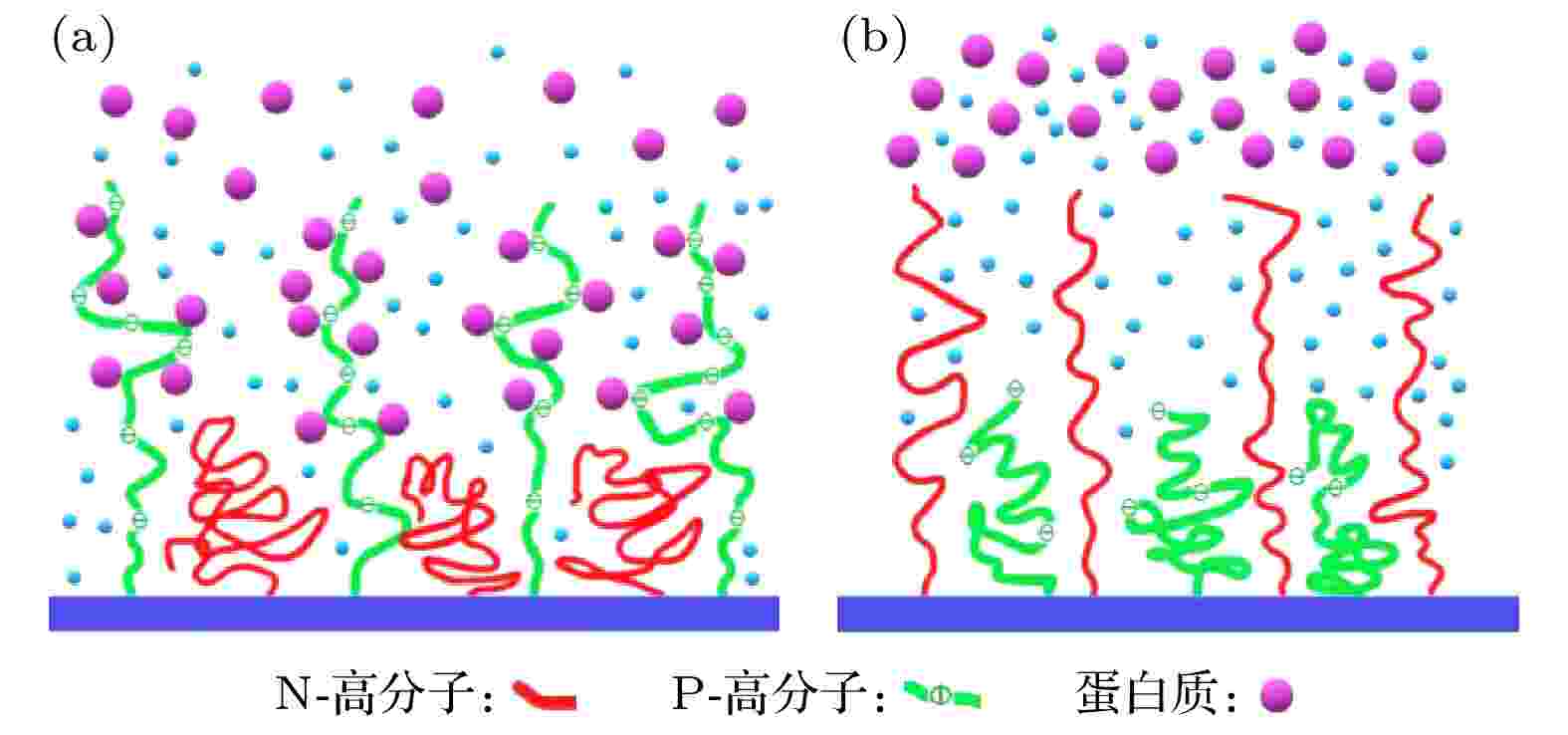
2021, 70 (22): 224701.
doi:10.7498/aps.70.20211219
Abstract +
Based on the diffusion dynamics, a new theoretical model is established to investigate the dynamic properties of a polymer mixed brush (PMB) in the protein adsorption/desorption process. The theoretical model considers the adsorption of proteins by one polymer chain (P-polymer chain) and the desorption of proteins by another polymer chain (N-polymer chain) in a PMB, as well as the time delay between adsorption and desorption. The dynamic properties of protein adsorption/desorption by a PMB depend on not only the chemical and physical properties of polymer chains, but also the microenvironment (density of protein in the solution and protein diffusivity) of the PMB. In order to describe the different chemical and physical properties of polymer chains and microenvironments in PMB, we take different model parameters, and obtain partial adsorption/desorption, complete adsorption/desorption and periodic adsorption/desorption of proteins by the PMB. By analyzing the process of protein adsorption/desorption in a PMB, we find that the microenvironment has an obvious influence on the adsorption and desorption of protein by the PMB. It is also shown that the adsorption of protein and the desorption of protein by the PMB have a stable and invariable periodic cycle when an alternating electric field is applied. The average adsorption capacity and the average desorption capacity increase in comparison with those when no electric field is applied. A stable alternating electric field enables the PMB to exhibit stable periodic dynamic characteristics in the dynamic process of protein adsorption and desorption. Our theoretical results are consistent with the experimental observations. Based on this, it is predicted that an external electric field can realize multiple cycles of protein adsorption and desorption by PMB, which provides necessary references and useful insights into controllable protein adsorption/desorption by the PMB in the practical applications.
CONDENSED MATTER: STRUCTURAL, MECHANICAL, AND THERMAL PROPERTIES
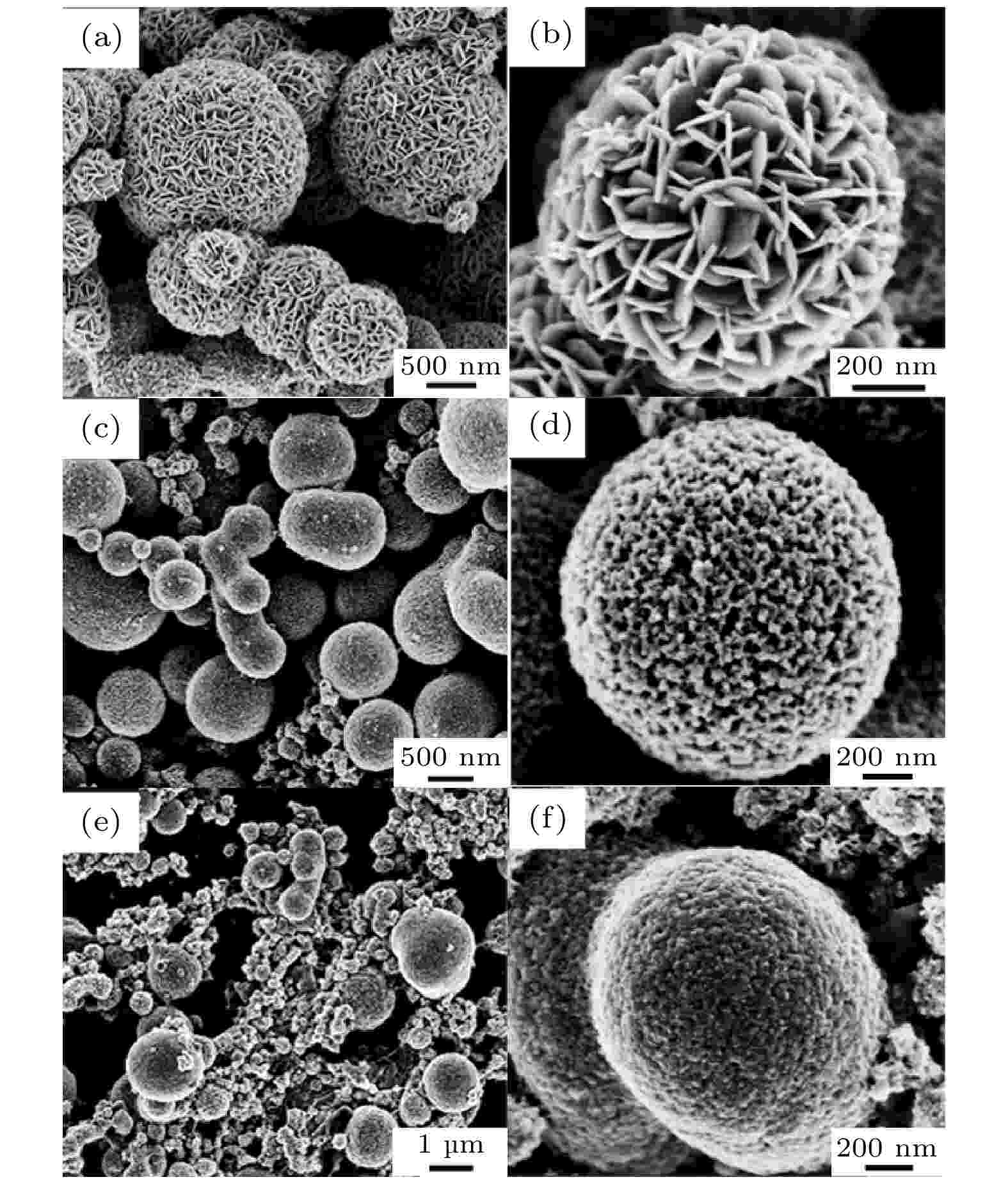
2021, 70 (22): 226101.
doi:10.7498/aps.70.20211152
Abstract +
In recent decades, growing population and industrial development have led to releasing huge amounts of highly toxic chemical pollutants into the environment globally. Several approaches to handling the removal of contaminants from wastewater for environmental remediation, including biological, chemical, physical, and advanced oxidation processes have been employed. Among them, using nano-adsorbents as a tool for effectively removing organic contaminants represents a promising strategy in sewage purification field. More importantly, the nano-adsorbents with auto-deposition property can greatly improve the efficiency of sewage treatment. Therefore, the developing of environment friendly nano-adsorbents is thus an important issue to remove organic contaminants in water via simply adsorbing. Here in this work, porous flower-like copper sulfide (CuS) grade sub-nanomaterials are successfully fabricated by simply mixing two inorganic salts. Furthermore, the as-prepared nano-adsorbents with auto-deposition property can create a super adsorption capability for organic contaminants in wastewater. We further study the adsorption/auto-deposition characteristics of porous flower-like CuS grade sub-nanomaterials systematically by using various organic dyes (methyl blue, crystal violet, lemon yellow, sunset yellow and amaranth) as target molecules. For instance, in a typical procedure, 0.8-mg methyl blue can be removed 100% via adding 10-mg porous flower-like CuS grade sub-nanomaterials sample in 30 min. Therefore, the adsorption efficiency can be enhanced by 55% and 26% in comparison with the adsorption efficiency of CuS micro pompons and micron particles, respectively. Additionally, the porous flower-like CuS grade sub-nanomaterials can self-deposite on the bottom of the solution within 3 h after adsorption has finished, and the deposition efficiency can be improved by 95% and 3.17 times in comparison with the deposition efficiency of CuS micro pompons and micron particles, respectively. Comparing with micron particles, the unique self-depositing characteristics of porous flower-like grade sub-nanomaterials are attributed to larger specific surface area, greater porosity and stronger electrostatic adsorption capacity. Remarkably, this work provides an effective method of effectively removing various organic dyes from wastewater.
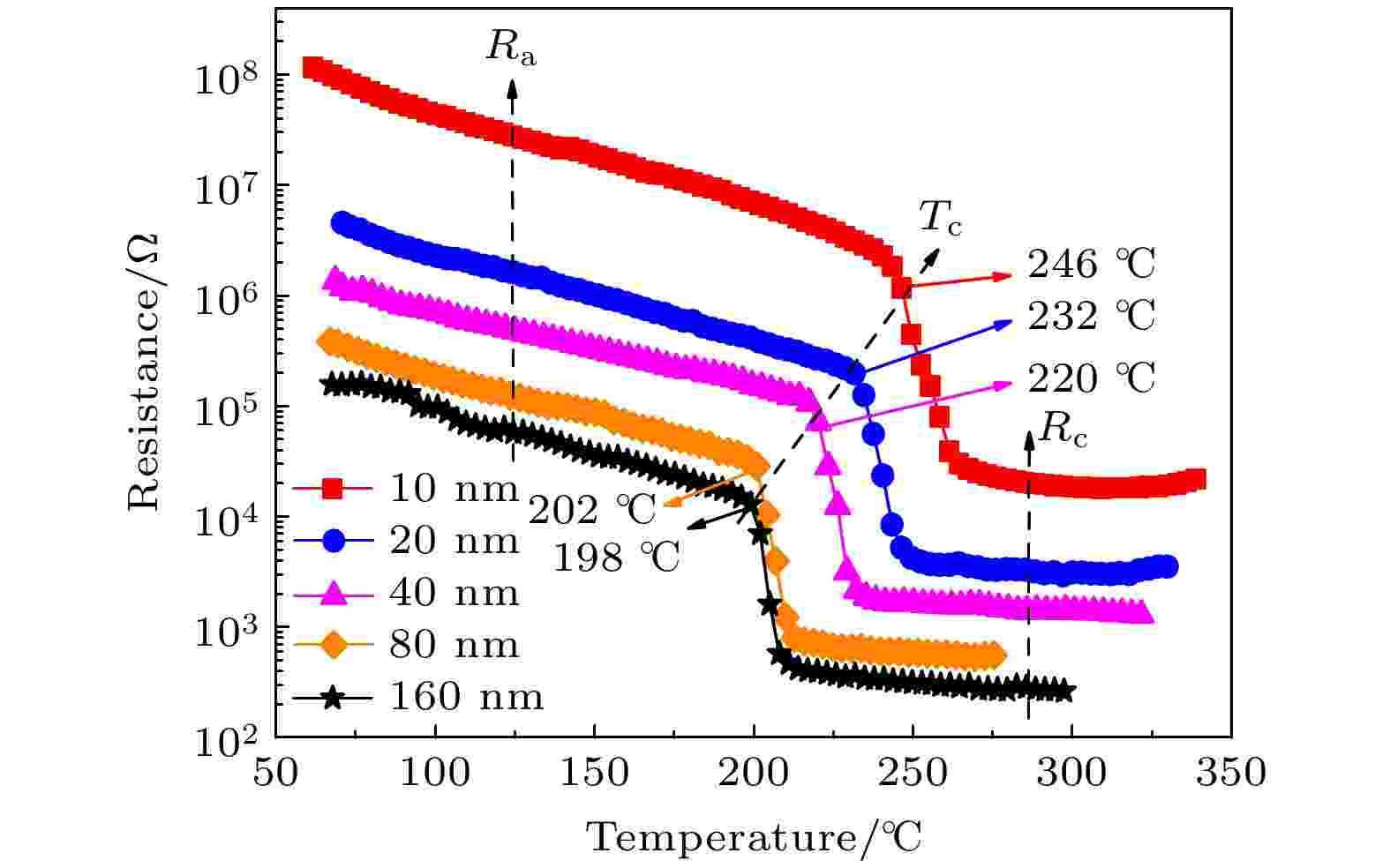
2021, 70 (22): 226102.
doi:10.7498/aps.70.20210973
Abstract +
Sn15Sb85thin films with different thickness are prepared by magnetron sputtering. The evolution of Sn15Sb85thin film from the amorphous state to the crystalline state is studied by anin-situresistance temperature measurement system. The crystallization temperature, electrical resistance, crystallization activation energy, and data retention capacity of Sn15Sb85thin film increase significantly with film thickness decreasing. The near infrared spectrophotometer is used to record the diffuse reflectance spectra of amorphous Sn15Sb85film. The results show that the band gap energy increases with film thickness decreasing. The surface morphology of Sn15Sb85film after being crystalized is observed by atomic force microscope, which shows that the thinner film has lower roughness. The analysis of X-ray diffraction indicates that the grain size becomes smaller and the crystallization may be inhibited by reducing the film thickness. T-type phase change memory cells based on Sn15Sb85thin films with different thickness are fabricated by the CMOS technology. The electrical performances of phase change memory show that the thinner Sn15Sb85film has a larger threshold switching voltage and smaller RESET operation voltage, which means the better thermal stability and lower power consumption. The outcomes of this work provide the guidance for designing the high-density phase change memory by reducing the size of Sn15Sb85thin film.
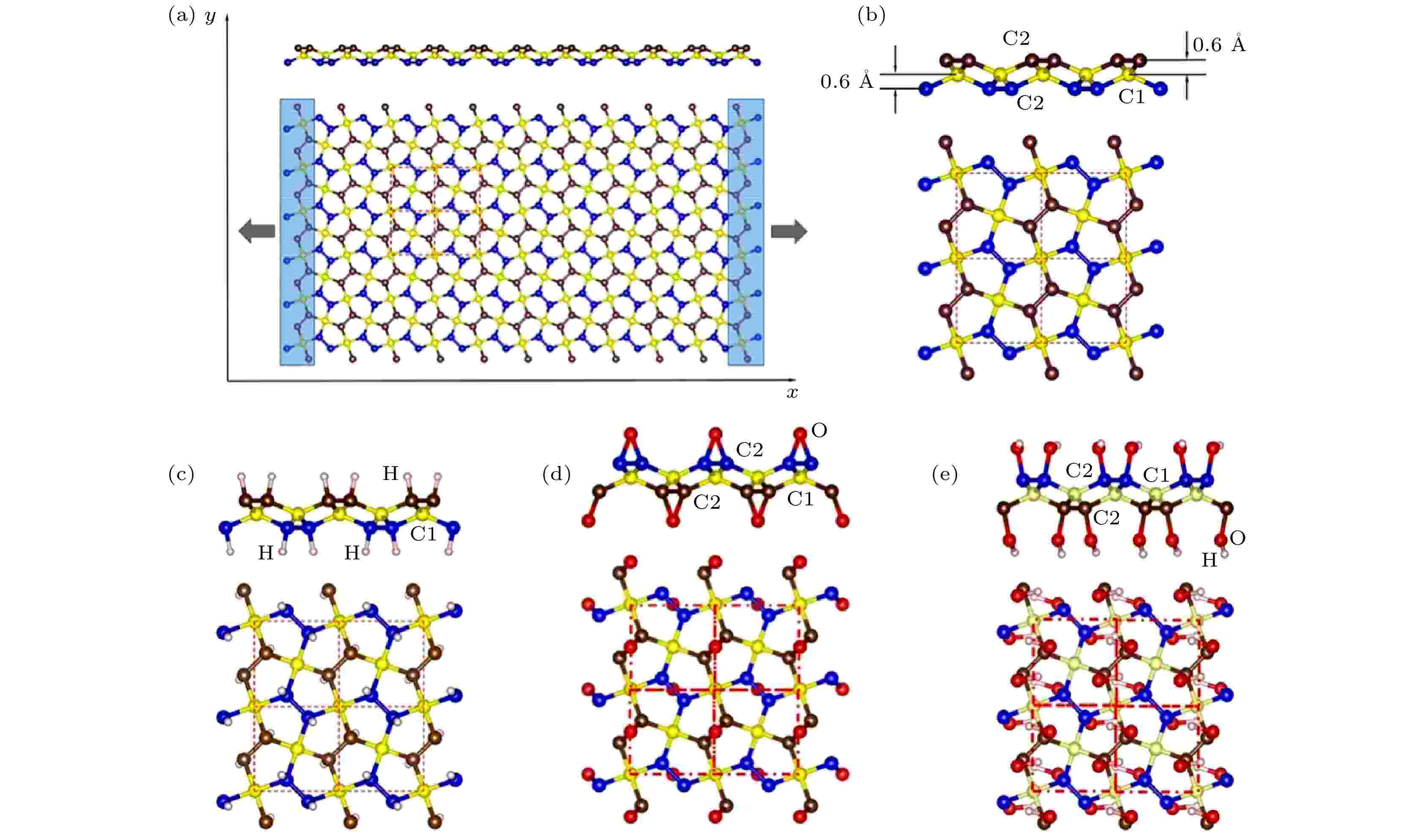
2021, 70 (22): 226201.
doi:10.7498/aps.70.20210764
Abstract +
Penta-graphene is a new two-dimensional metastable carbon allotrope composed entirely of carbon pentagons with unique electronic and mechanical properties. In this work, molecular dynamics simulations are carried out to investigate the effects of functionalization by hydrogen, epoxide or hydroxyl groups on the mechanical properties and failure mechanism of penta-graphene, as well as the effects of different functionalization coverages. The effects of functionalization on the structural transformation of free-standing penta-graphene triggered by increasing temperature have also been studied. The results indicate that each of the three functional groups considered can effectively tune the mechanical properties and the failure mechanism of penta-graphene. Both the Young's modulus and elastic limit of penta-graphene first decrease sharply and then increase slowly with the increase of the functionalization coverage, while the ultimate elastic strain increases monotonically. Like the pristine penta-graphene, partially functionalized penta-graphene still exhibits a plastic deformation failure behaviour under tensile load, which is caused by the irreversible pentagon-to-polygon structural transformation occurring during tensile loading. Temperature can trigger structural reconstruction for free-standing partially functionalized penta-graphene, and the corresponding critical transition temperature is higher than that of pristine penta-graphene. However, complete functionalization can change the deformation mechanism of penta-graphene from plastic deformation to brittle fracture. For fully functionalized penta-graphene by each of the three functional groups, the structural transformation is not observed when tensile strain is applied or environmental temperature is increased. These findings are expected to provide important guidelines for effectively tuning the mechanical properties of two-dimensional nanomaterials including penta-graphene.
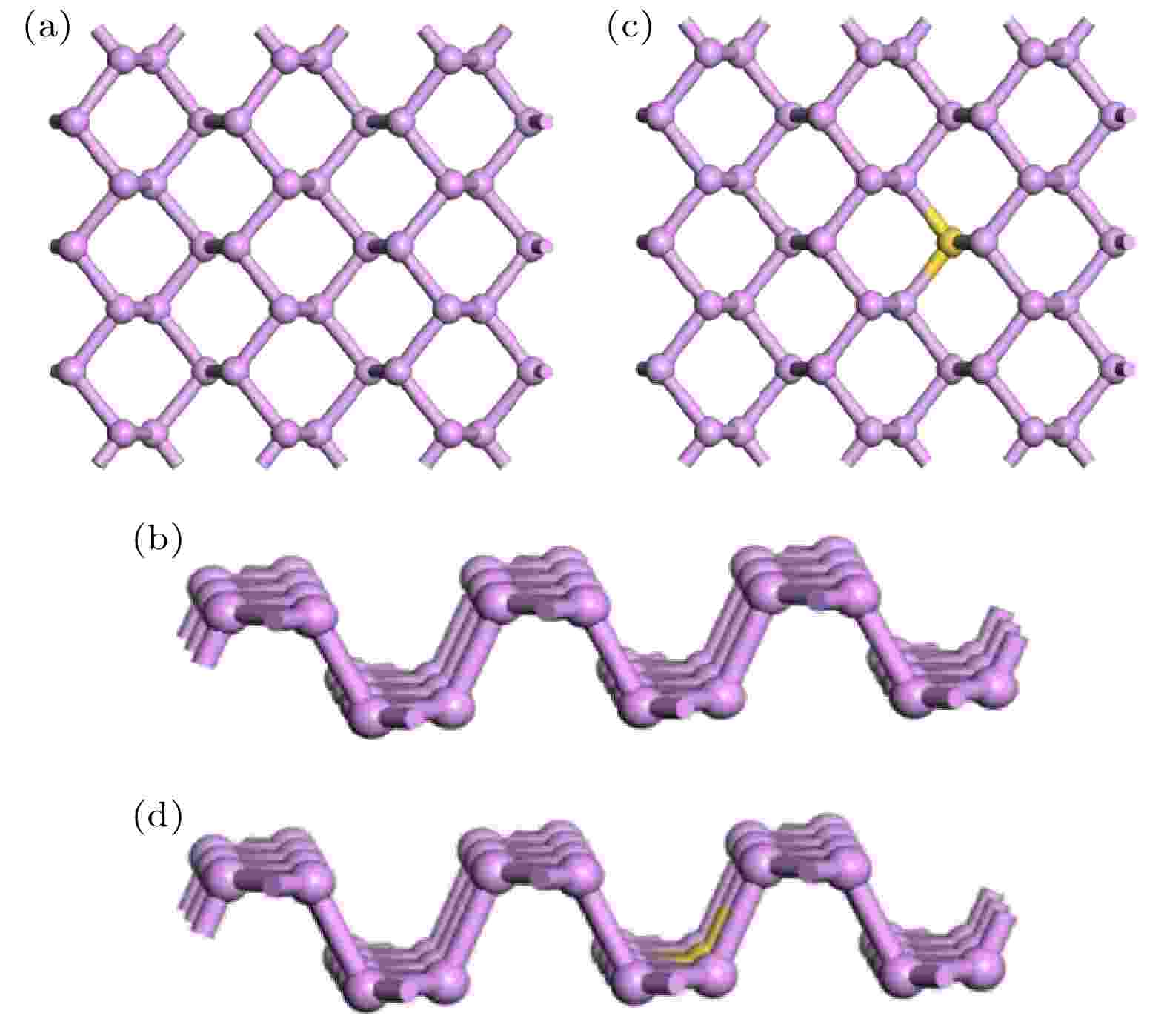
2021, 70 (22): 226301.
doi:10.7498/aps.70.20210795
Abstract +
The first-principles method based on density functional theory is used to study the effect of torsion deformation on the electronic structure and optical properties of gold-doped black phosphorene. The results show that the electronic structure of the gold-doped black phosphorene system is more sensitive to torsion deformation than that of the intrinsic black phosphorene system under torsion. The analysis of the energy band structure indicates that intrinsic black phosphorene is a direct band gap semiconductor. After being doped with gold, it can realize its transformation from semiconductor into metal. After the gold-doped black phosphorene system is twisted by 1°, the band gap is opened and becomes an indirect band gap semiconductor. As the torsion angle increases, the band gap of the intrinsic black phosphorene system increases slowly, while the band gap of the gold-doped black phosphorene system first decreases, then increases, and then decreases. From the analysis of the density of states, it is found that when the torsion angle changes from 0° to 5°, the intrinsic black phosphorene system has a strong sp orbital hybridization. The s orbit and p orbit contribute to the conduction band and the valence band, but the p orbit is better than the s orbit. The contribution to the total density of states is more, and the s orbital, p orbital and d orbital of the gold-doped black phosphorene system all contribute to the total density of states. From the analysis of optical properties, it is found that compared with the intrinsic black phosphorene system with a torsion angle of 0°, the intrinsic black phosphorene twisted system exhibits a blue shift at the absorption peak and reflection peak, and the gold-doped black phosphorene twisted system exhibits a blue shift in both absorption peak and reflection peak. Both the absorption peak and the reflection peak are red-shifted.
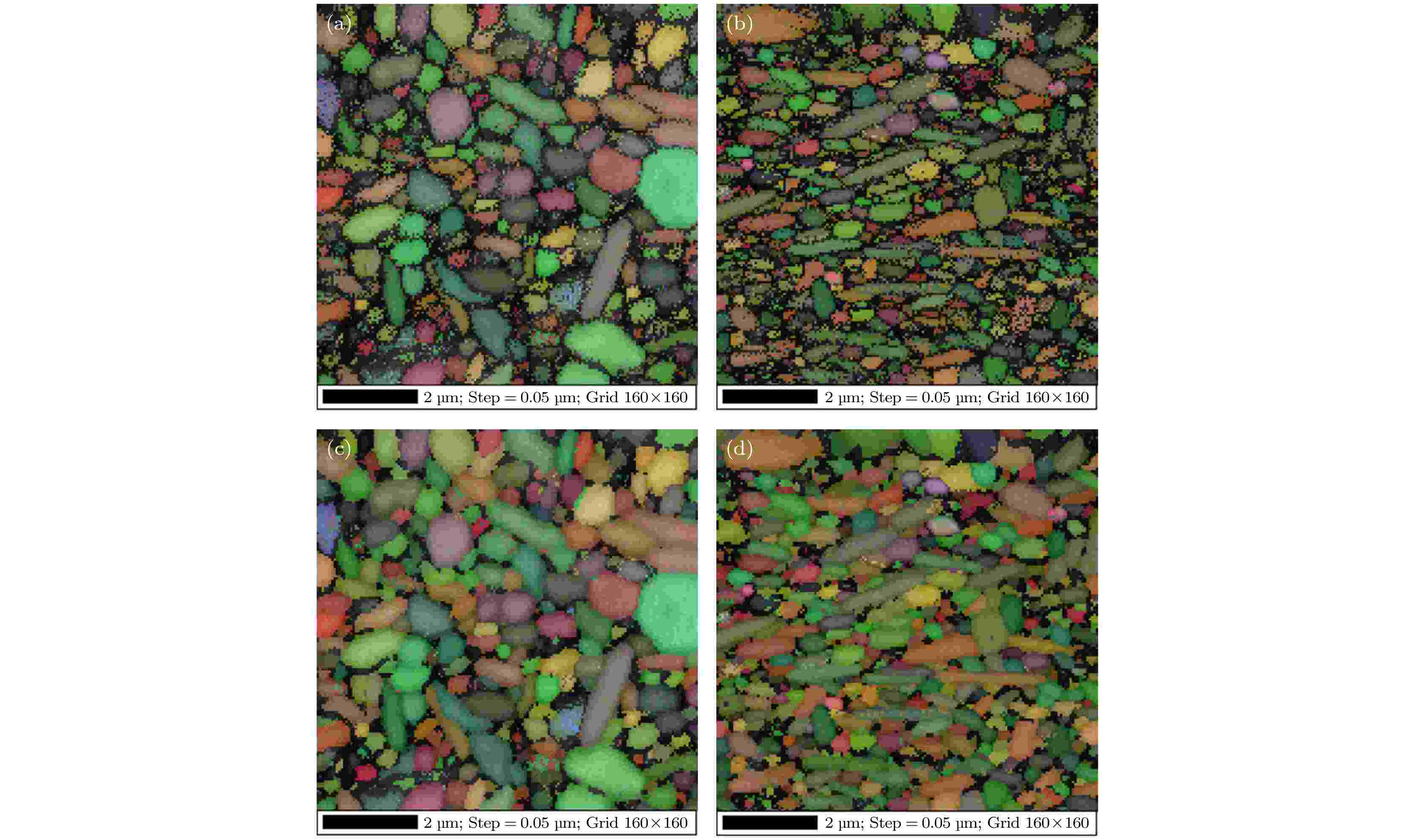
2021, 70 (22): 226801.
doi:10.7498/aps.70.20210233
Abstract +
The structure of grain boundary has an essential influence on the physical and mechanical properties, especially the high-temperature mechanical properties of silicon nitride ceramics. In the present work, the five-parameter analysis method which is established based on electron backscatter diffraction (EBSD), and stereology and statistics are used to study the grain boundary character distributions in the two commercial silicon nitride ceramic ball samples. These two samples are both fabricated by hot isostatic pressing but made in China and abroad, respectively. The results indicate that the misorientation distributions of the two samples radically deviate from the random distribution at a rotation angle of 180°, showing that the frequency of the relevant grain boundaries is dramatically higher than that of the randomly distributed ones. These grain boundaries are mainly those possessing the misorientations of [0 1 –1 0]/180° and [–1 2 –1 0]/180°, corresponding toΣ2 andΣ3 boundaries, respectively. The grain boundary inter-connections (GBICs) of theΣ2 boundaries are basically the same in the two samples, and they are dominated mainly by the {0 0 0 1}/{0 0 0 1} basal-to-basal inter-connection. However, the GBICs ofΣ3 boundaries are quite different in the two samples. they primarily the {–1 2 –1 0}/{–1 2 –1 0} prismatic-to-prismatic inter-connection for theΣ3 boundaries in the sample made in China, but it is mainly the {1 0 –1 0}/{1 0 –1 0} prismatic-to-prismatic inter-connection for theΣ3 boundary in the sample made abroad. Crystallographic analysis shows that the planar coincidence site density (PCSD) for the {–1 2 –1 0}/{–1 2 –1 0}, {0 0 0 1}/{0 0 0 1} and {1 0 –1 0}/{1 0 –1 0} GBIC are 2.45 /nm2, 7.95 /nm2and 9.10 /nm2, respectively, implying that the degree of the structural ordering increases in turn. Further discussion emphasizes that the grain boundaries possessing {1 0 –1 0}/{1 0 –1 0} GBIC and {0 0 0 1}/{0 0 0 1} GBIC should be one type of special boundaries due to their high degrees of structural ordering.
CONDENSED MATTER: ELECTRONIC STRUCTURE, ELECTRICAL, MAGNETIC, AND OPTICAL PROPERTIES
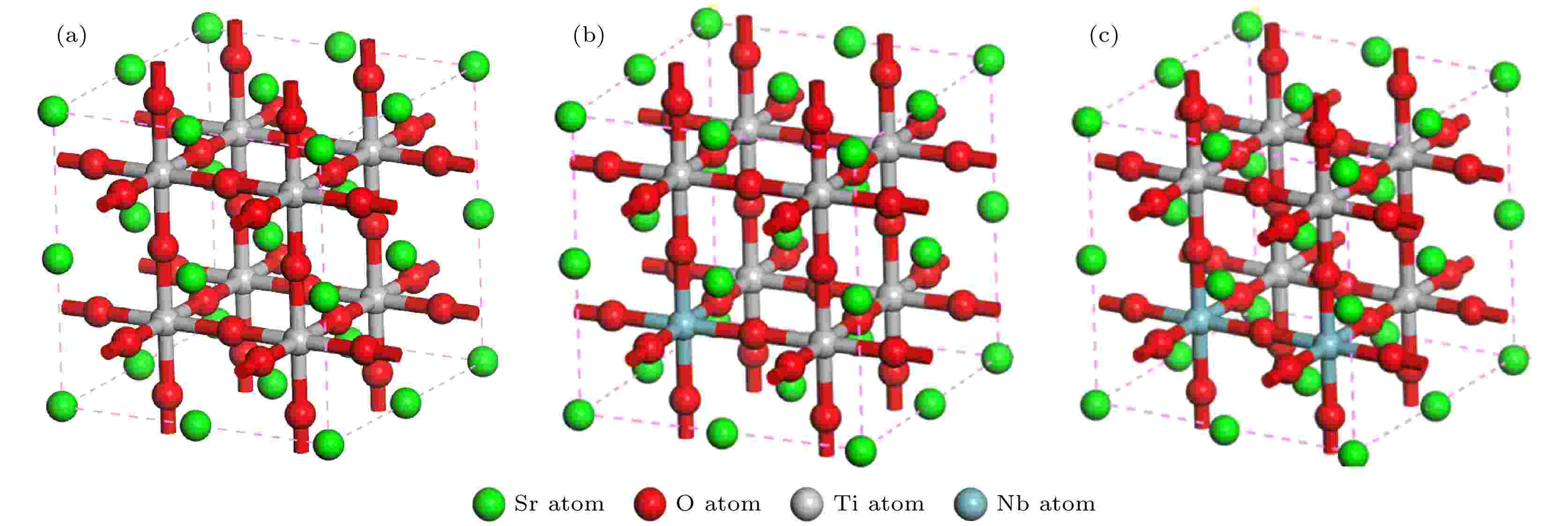
2021, 70 (22): 227101.
doi:10.7498/aps.70.20211241
Abstract +
The modification of SrTiO3materials by doping Nb5+ions in B-site is studied through using the first-principles method to calculate the electronic structure, optical properties, mechanical properties and thermal properties at different Nb5+doping concentrations. The calculation results show that as the doping content of Nb5+increases, the lattice parameters increase. After being doped with Nb5+, SrTiO3changes from an indirect band gap compound into a direct band gap compound. Doping Nb5+can reduce the reflection coefficient, absorption coefficient, and energy loss of SrTiO3material, which can be used to modify its optical properties. Additionally, the brittleness of SrTiO3material is improved through doping Nb5+. As the doping content of Nb5+increases, the elastic modulus of the material hardly changes, the shear modulus and Young's modulus decrease, the Poisson's ratio increases, and the Debye temperature decreases, and both the lattice thermal conductivity and the theoretical minimum lattice thermal conductivity decrease as well.
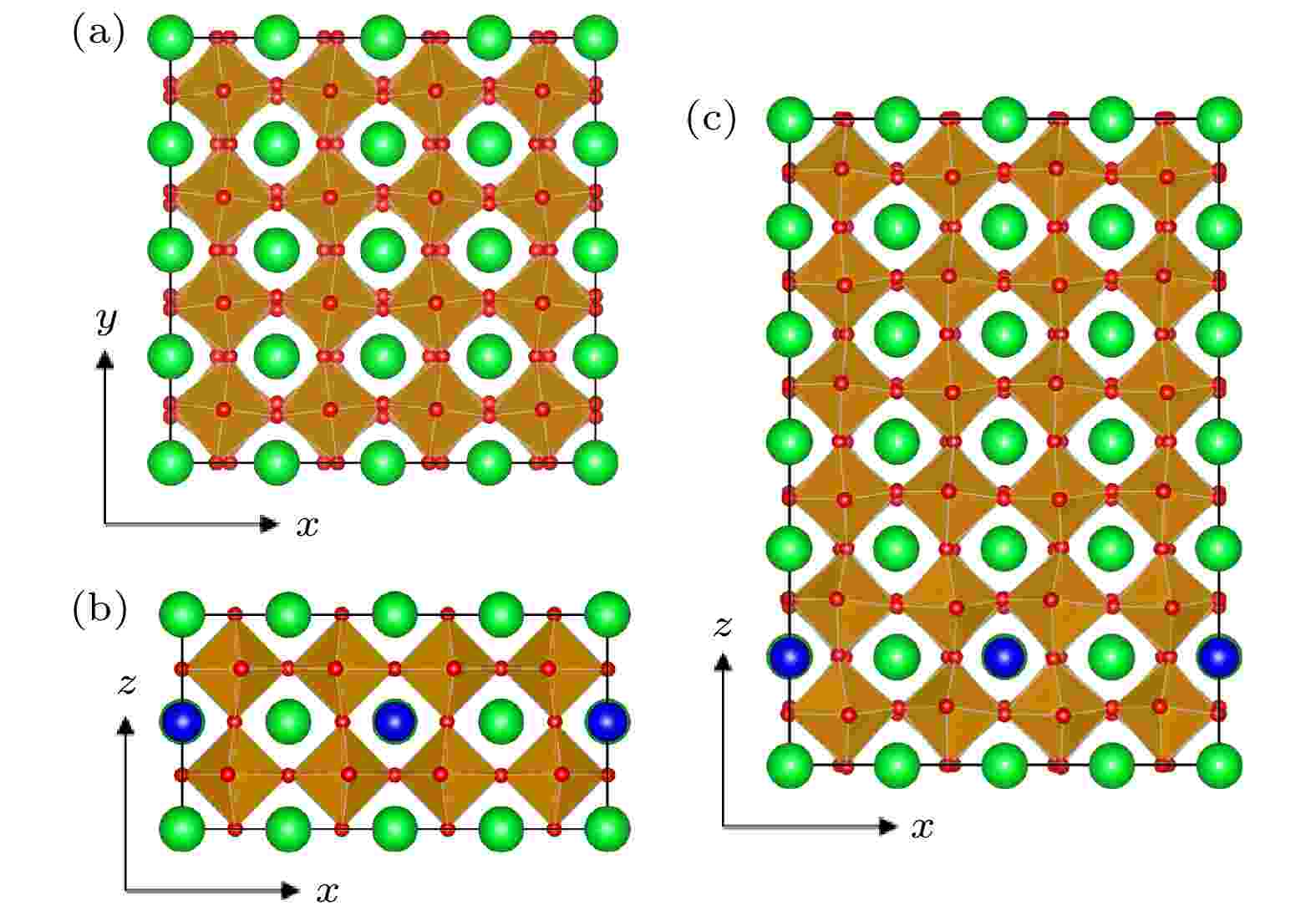
EDITOR'S SUGGESTION
2021, 70 (22): 227102.
doi:10.7498/aps.70.20210830
Abstract +
Electronic properties in δ-doped La:SrTiO3superlattices varying with the doping dimensionality and concentration are systematically studied through using first-principles calculation. The superlattices consist of periodically repeated La-doped single SrTiO3layers in SrTiO3film, and the doping dimensionality can be tuned by varying the space of the neighboring doped layers. At 25% doping concentration, the spacing between SrTiO3layers increases from 1 unit-cell layer to 5 unit-cell layers, i.e. the doping dimensionality changes three dimensions to two dimensions, the superlattice charater changes from metallic character into insulating character, and the charge sequence, spin sequence and orbital sequence are present in a localized state. This metal-insulator transition is ascribed to the stronger correlation effect in the two-dimensional electron system. With the two-dimensional doping concentration increasing to 50%, the correlation effect becomes weak and the system becomes metallic.
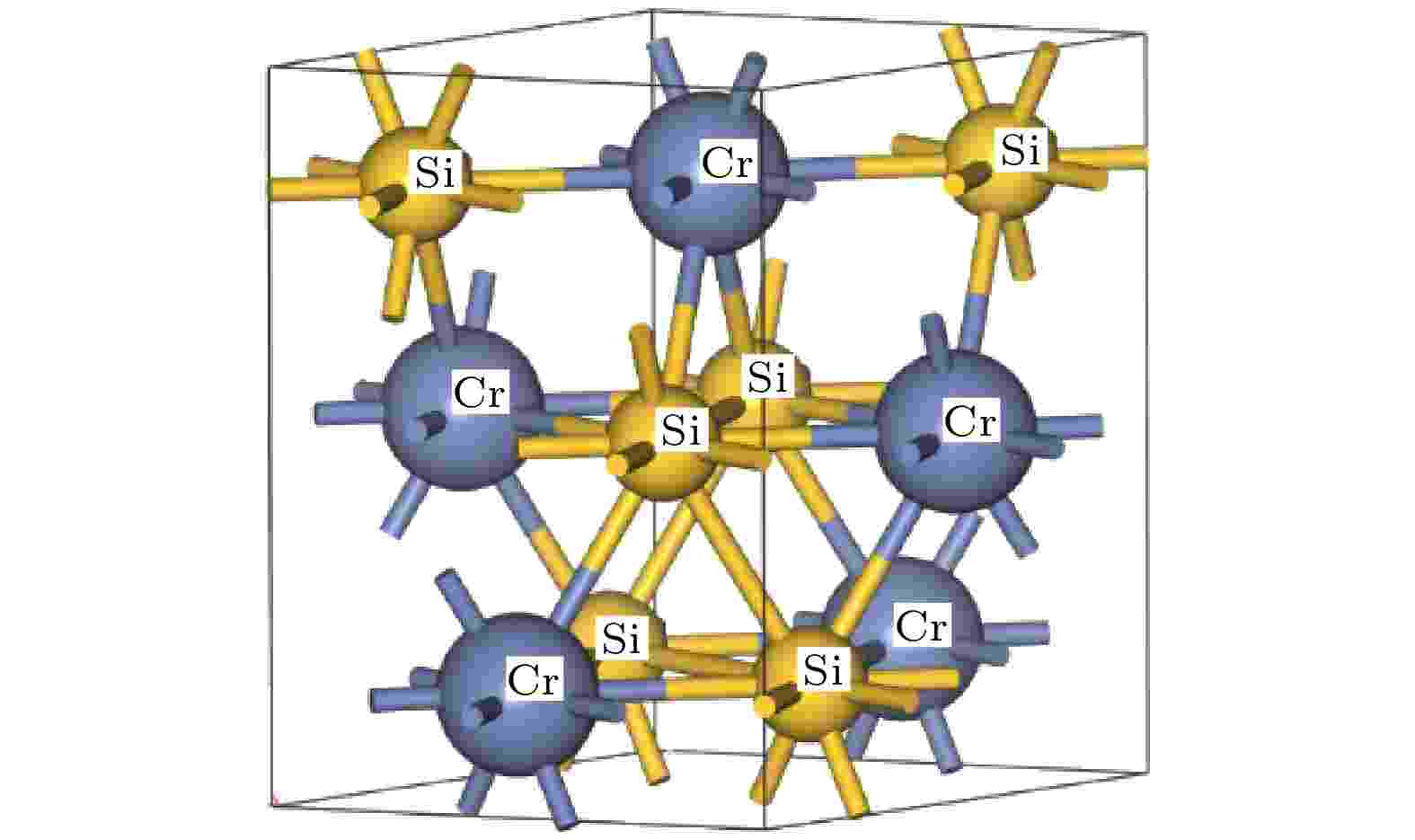
2021, 70 (22): 227301.
doi:10.7498/aps.70.20211023
Abstract +
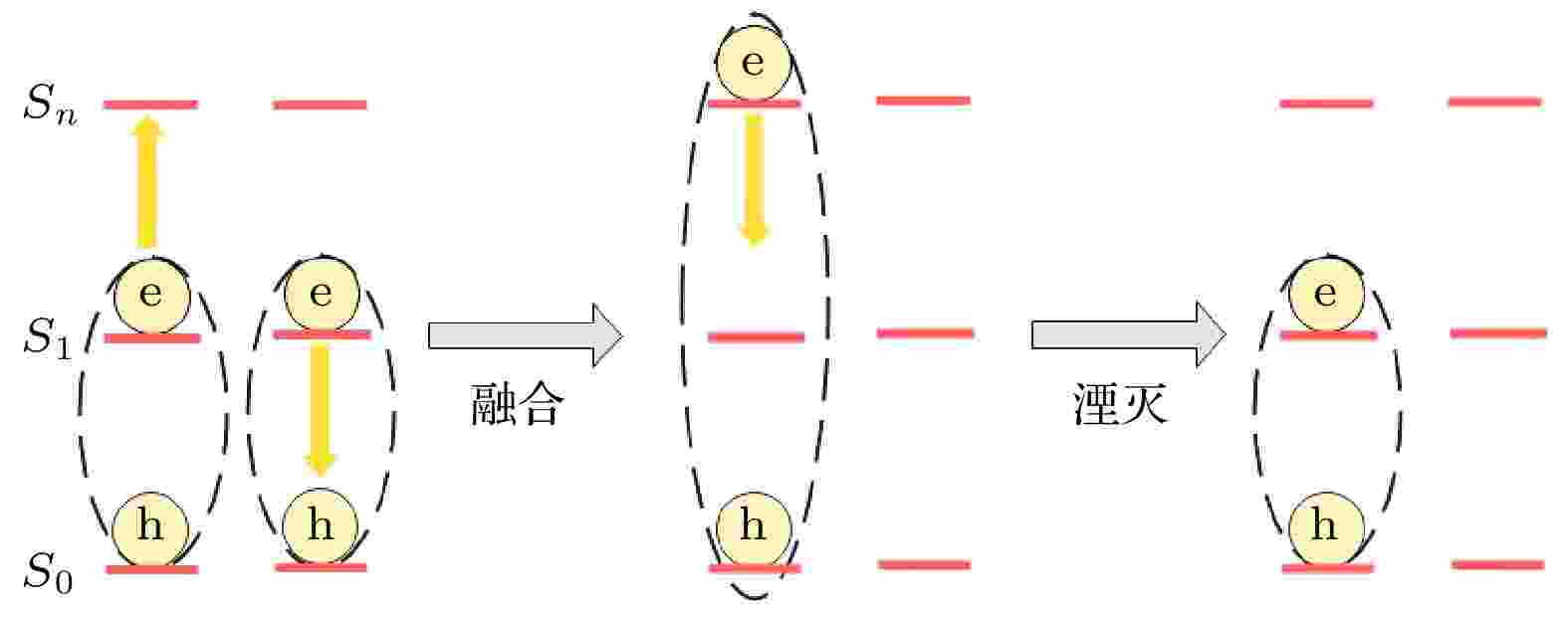
EDITOR'S SUGGESTION
2021, 70 (22): 227302.
doi:10.7498/aps.70.20211242
Abstract +
Dynamics of exciton-exciton annihilation (EEA) in molecular aggregates is closely related to its luminescence characteristics and energy transfer. It is meaningful to uncover energy and charge transfer process in molecular systems. Therefore, studying the dynamics of exciton is important for simulating photosynthesis in nature and analyzing the transport process of photocarriers. In this paper the weak coupling approximation is adopted to obtain the rate equation in the framework of density matrix theory. The relation among the intermolecular distance, exciton state density, excited state dipole moment and exciton-exciton annihilation dynamics is studied by the rate equations. It is found that the decrease of intermolecular distance leads the generation rate of higher-order excited states to increase, resulting in the obvious S-shaped decay characteristics. Moreover, the dipole moment of the higher-order excited state is the key factor of the exciton fusion process, and the greater the exciton density, the more easily the exciton fusion process occurs. Therefore, the reduction of intermolecular distance and the increase of the dipole moment of the higher-order excited state make the nearest neighbor molecules have a strong coupling, resulting in a high generation rate of the higher-order excited state. It is found that the evolution processes of the first excited state in different exciton densities are consistent with the experimental results of the excitation of OPPV7 monomer (PPV oligomers of 7) at a low excitation energy, and the excitation of OPPV7 aggregates at different excitation energy levels. It can be observed that the exciton decay rate is faster under the excitation of the strong external field. Using the quantum wave packet under optical excitation as the initial state, the excited state dynamics is simulated at different exciton energy levels. It is found that the exciton state can maintain good locality within a few hundreds of femtoseconds, which shows that the exciton state is a coherent superposition state, and its local characteristics are related to the excitation energy level. These conclusions are applicable to the aggregations whose single molecule has an energy level of
${E_{mf}} \approx 2{E_{me}}$
, and also provide a reasonable reference for the exciton-exciton annihilation process under optical excitation.
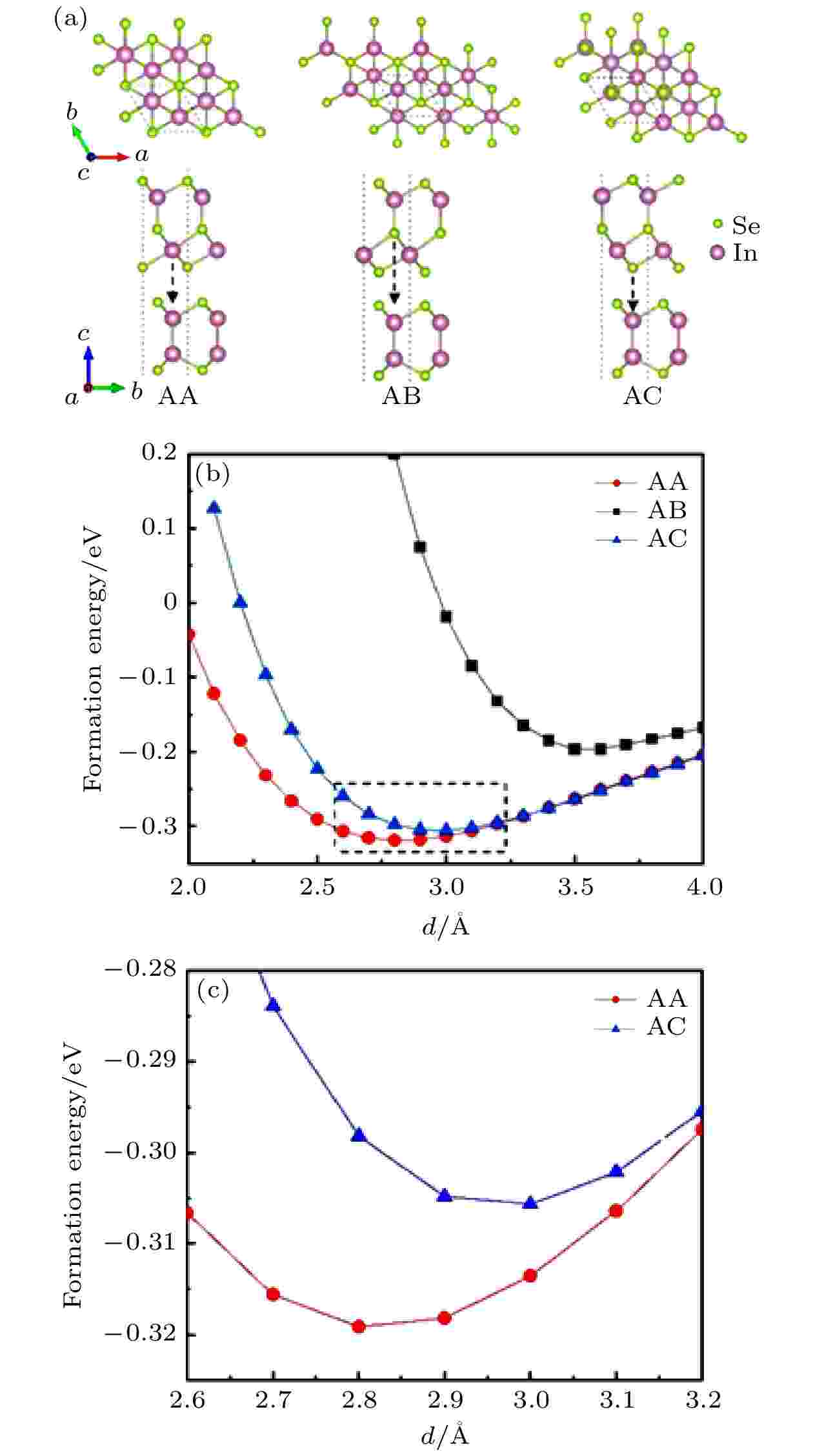
COVER ARTICLE
2021, 70 (22): 227701.
doi:10.7498/aps.70.20211158
Abstract +
In recent years, two-dimensional ferroelectric heterojunctions have shown potential applications in the fields of high-density storage and optoelectronic devices. The development of novel two-dimensional ferroelectric heterojunctions is an important current research direction. In this work, first-principles calculations are used to study the band structure and stress control of In2Se3/InSe vertical heterojunction composed of two-dimensional ferroelectric material α-In2Se3and monolayer InSe. The calculations show that the In2Se3/InSe heterojunction is an indirect band gap semiconductor with type-II band matching. When the polarization direction of In2Se3is perpendicular to the surface facing outward, the band gap is 0.50 eV, and the top and bottom of the valence band originate from InSe and In2Se3respectively; when the polarization direction of In2Se3points inward the plane, the band gap decreases by 0.04 eV, and the sources of the top of the valence band and the bottom of the conduction band are interchanged. Under in-plane stretching, the greater the degree of stretching, the smaller the band gap is. After a certain threshold is exceeded, the heterojunction changes from a semiconductor into a conductor, which can also change the heterojunction with an indirect band gap into that with a direct band gap. The research results of this work show that changing the polarization direction and applying stress is an effective way to control the two-dimensional In2Se3/InSe ferroelectric heterojunction, which can provide a theoretical reference for designing the relevant ferroelectric devices.

2021, 70 (22): 227901.
doi:10.7498/aps.70.20211110
Abstract +
In recent years, researchers have proposed a model of graphene thermionic energy converter (GTEC) for the utilization of high-grade thermal energy, which is used to extensively study the physical mechanism and parametric optimization. However, the influences of space charge accumulation and near-field radiative effects on the GTEC’s energy conversion performance are rarely reported. In the present work, the theories of thermionic emission, Langmuir space charge, non-equilibrium thermodynamics, and fluctuating electrodynamics are used to construct an improved model, in which the coupling effects of thermionic transport, near-field radiative heat transfer, and Newton heat transfer are considered. Firstly, the dependence of additional potential barrier, current density, power density, efficiency, and heat flows on the voltage and the vacuum gap are analyzed by neglecting the Newton heat transfer. The results show that the vacuum gap has a significant influence on the power density, while it has a negligible effect on the efficiency, the optimal power density and efficiency can be obtained at two different voltages. Secondly, the variations of power density and efficiency with voltage are analyzed on condition that the electrodes’ temperatures are restricted by the energy balance equation. It is found that Newton heat transfer has a significant influence on the power density, while it has a negligible effect on the conversion efficiency; the anode’s temperature at the optimal power density is higher than the ambient temperature, and the temperature at the optimal efficiency is close to the ambient temperature; the optimal regions of voltage, vacuum gap, and anode’s temperature are determined by considering the trade-off between power density and efficiency. The results obtained in this work can provide a theoretical basis for the development of practical devices.
INTERDISCIPLINARY PHYSICS AND RELATED AREAS OF SCIENCE AND TECHNOLOGY

2021, 70 (22): 228701.
doi:10.7498/aps.70.20210885
Abstract +
The high morbidity and mortality of cardiovascular diseases (CVDs) seriously affects the quality of human life. How to asses cardiac function, assist in the diagnosis and treatment of clinical CVDs and evaluate prognosis is a problem to be solved urgently. In response to this issue, based on previous work of Cardiac Cine Magnetic Resonance (CCMR) image segmentation of the left myocardium (LVM), a robust and accurate LVM motion tracking method (DispFlow_UNet_Flow) with using the displacement flow UNet (DispFlow_UNet) and biomechanics-informed variational autoencoder (VAE) is proposed in this paper. The following are the main research contents: (1) building a compressed excitation residual U-net network to accurately segment LVM, calculating the ventricular volume and myocardial mass according to the segmentation results, and then evaluating the overall cardiac function; (2) reconstructing the dense displacement field (DDF) based on the proposed motion tracking method, and obtaining the LVM dense displacement field by combining the LVM segmentation mask; (3) contrasting and evaluating the motion tracking results by using the true displacement vector field of simulated data and clinical data sets. All the results show that the tracking algorithm proposed in this paper has high precision and generalization capability.
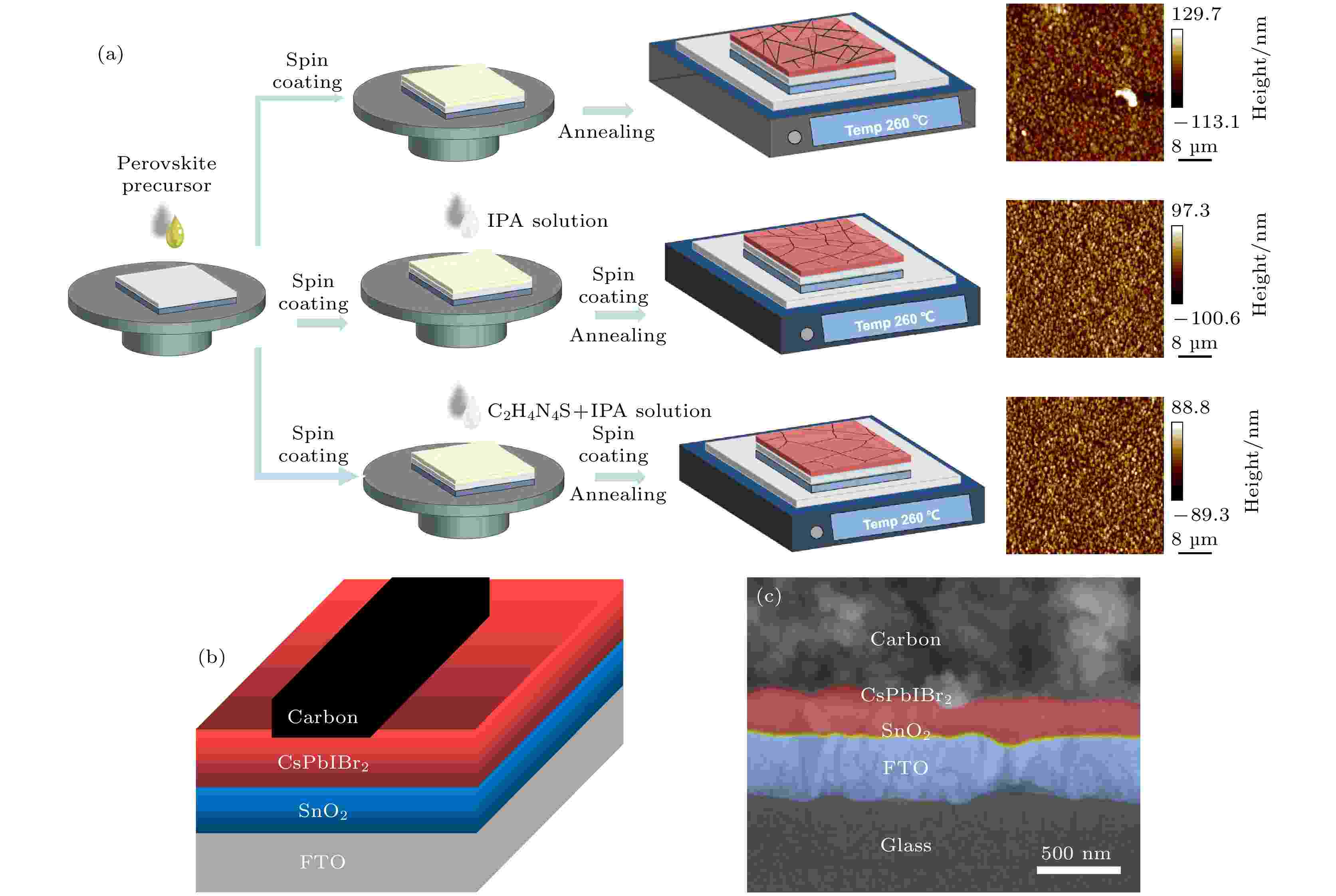
2021, 70 (22): 228801.
doi:10.7498/aps.70.20211079
Abstract +
All-inorganic perovskite has attracted extensive attention due to its photovoltaic properties and stability. Typically, the α-phase CsPbI3has an ideal bandgap of 1.73 eV suitable for the construction of high performance inorganic PSCs. But it suffers phase instability under ambient condition because of the unsatisfactory tolerance factor. By incorporating Br atoms into the perovskite structure, can greatly enhance the phase stability can be greatly enhanced. For example, CsPbBr3shows an excellent ambient stability and a wide bandgap of 2.3 eV that results in a limited light absorbtion. With the consideration from the unified perspective of the bandgap and the ambient phase stability, CsPbIBr2has a relatively appropriate bandgap (2.05 eV) and higher stability than CsPbI3and CsPbI2Br, which is made a good option for stable and efficient PSCs. However, there exist numerous defects on the CsPbIBr2film prepared by conventional one-step deposition method, which seriously affect the photoelectric conversion efficiency (PCE) of perovskite solar cells (PSCs). Considering the short dripping time and poor reproducibility of conventional anti-solvent technology, a precursor film preparation process is proposed to fabricate efficient and stable carbon-based CsPbIBr2perovskite solar cells. Using isopropyl alcohol (IPA) as the anti-solvent, the nucleation position of perovskite can be adjusted by regulating the evaporation rate of DMSO in the precursor film. In addition, guanidine thiocyanate (C2H4N4S) is added into IPA solution as a passivator to regulate the nucleation and crystallization process of perovskite. The carboxylic acid group of C2H4N4S can crosslink to Pb2+of CsPbIBr2via a chelating interaction, resulting in the easier decomposition of the CsI-DMSO-PbBr2intermediate phase in the spin-coating process of the precursor film. The amino group of C2H4N4S can also promote the crystallization and suppress the ion migration of the perovskite film through hydrogen bonds. The result shows that the compactness of the optimized CsPbIBr2film is significantly improved and the average grain size is about 800nm. The crystallinity and grain orientation are improved, and thus achieving better carrier separation and transport efficiency. The highest PCE of carbon-based CsPbIBr2PSC is obviously improved from 5.29% to 6.71%, i.e. increased by almost 21.16% compared with the control sample. Furthermore, the PSCs with precursor film preparation process possesses better long-term stability. The results obtained in this paper demonstrate that the new preparation technology can improve the quality of inorganic perovskite films in pure DMSO solvent system.
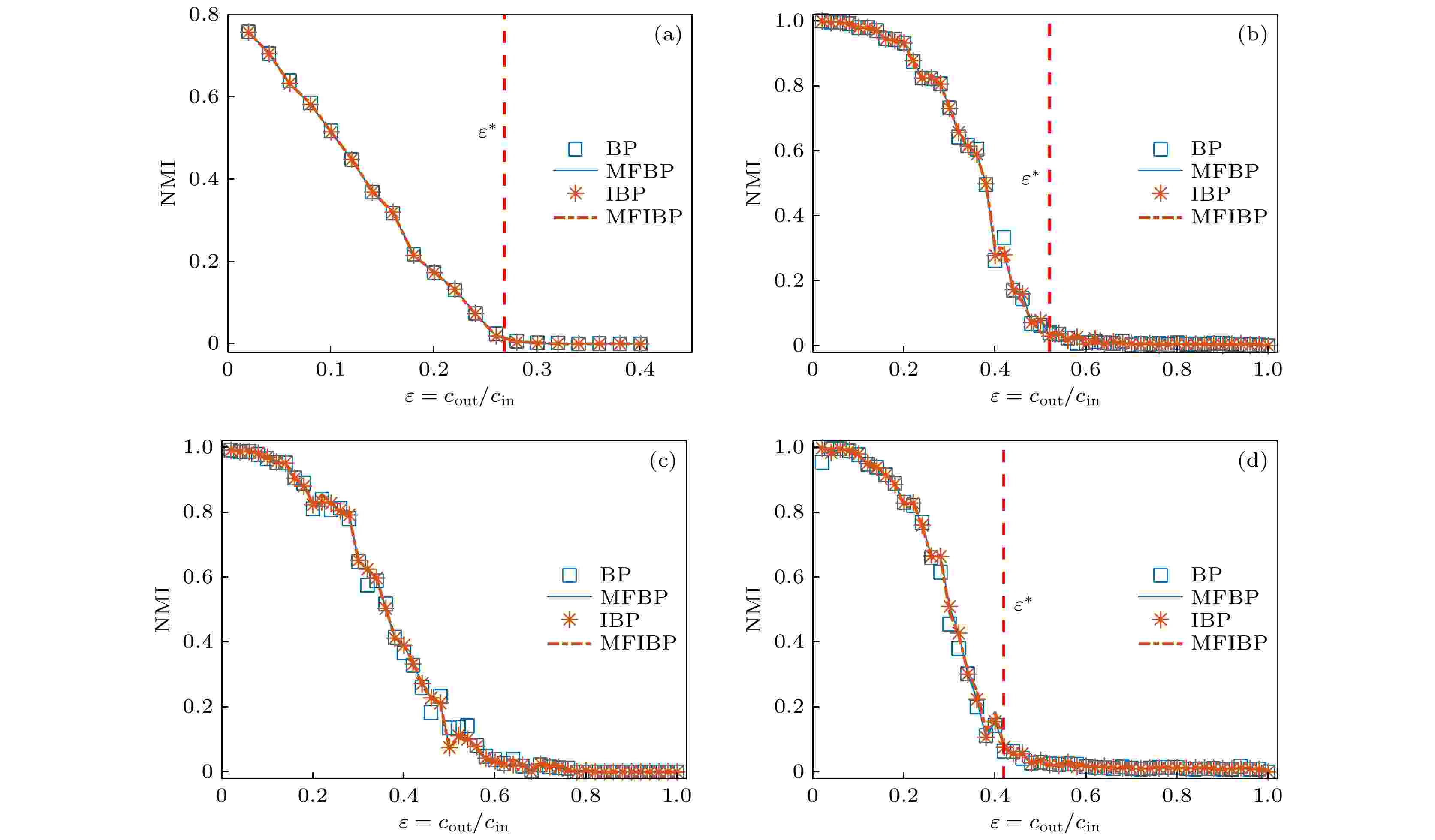
2021, 70 (22): 228901.
doi:10.7498/aps.70.20210511
Abstract +
As a mainstream algorithm for inferring probabilistic graphical models, belief propagation (BP) algorithm is one of the most important methods to solve the joint probability distribution in the stochastic block model. However, existing methods either lead to low accuracy in dealing with the core-periphery structure problem, or the theoretical derivation is difficult to understand due to a large number of approximation, or both exist. Of course, the reason for low accuracy comes from too many approximations. The main reason for many approximations and complex theoretical derivation is that the joint probability distribution in the inference process of the stochastic block model is not directly solved by the BP algorithm, that is, the graph (network) being processed is not consistent with the graph considered in the probabilistic graph model. Therefore, in this paper, a mean-field approximation is developed to modify the joint probability distribution to make the BP algorithm match perfectly, which makes the theoretical derivation easy to understand. Finally, the effectiveness of the proposed method is validated by the experimental results.
GEOPHYSICS, ASTRONOMY, AND ASTROPHYSICS
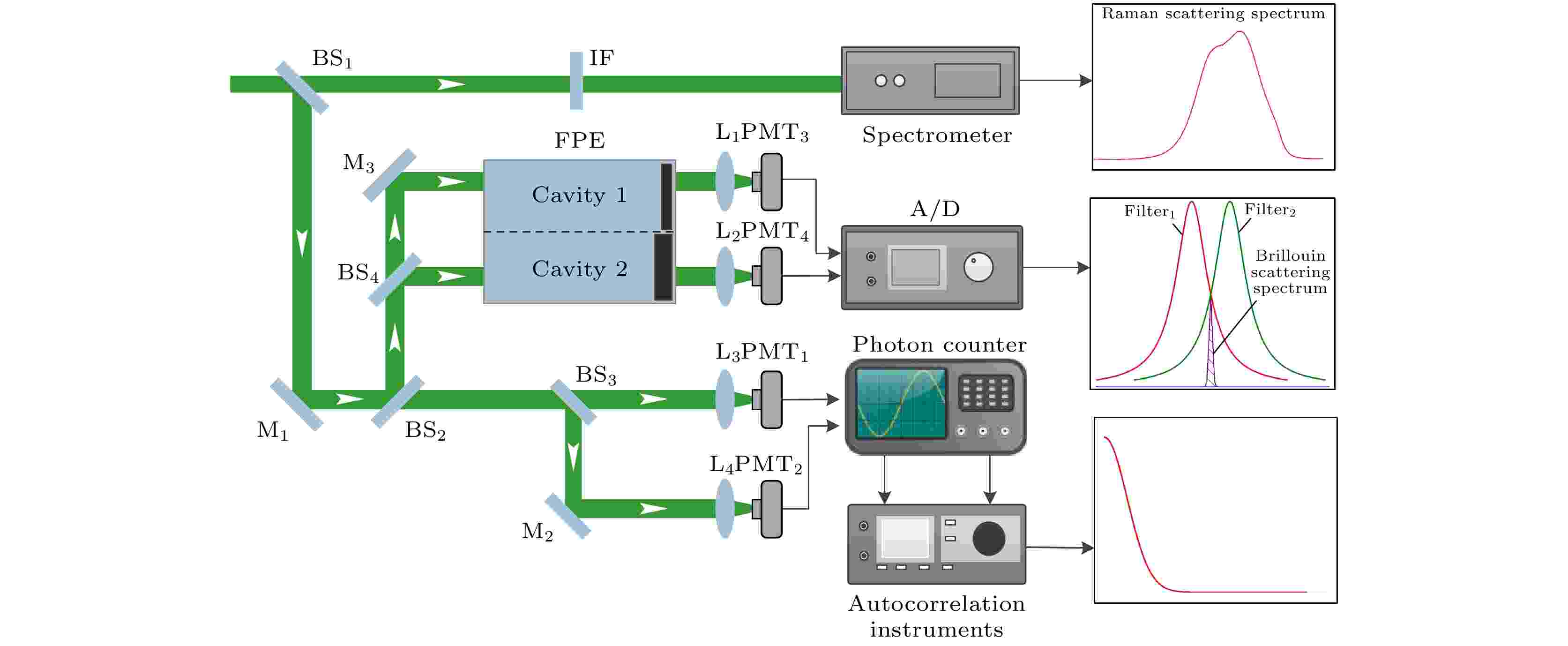
2021, 70 (22): 229201.
doi:10.7498/aps.70.20210201
Abstract +
Salinity is an important physical parameter in oceanography. The change of seawater salinity is closely related to the change of marine environment and climate. Investigation of seawater salinity is of great significance for marine biology, climate simulation, weather forecast and hurricane path prediction. At present, in the research of seawater salinity detection based on Raman scattering, the influence of temperature change is ignored, which will cause inaccurate detection results. In order to achieve high-precision detection of seawater salinity, in this paper, a method of combining the precision salinity inversion with ocean Brillouin scattering is proposed. According to the influence of temperature and salinity on Raman scattering spectra, the functional relationship between them is established. Raman scattering spectra and Brillouin frequency shift are used to implement the inversion seawater salinity. The Brillouin frequency shift cannot be obtained directly by the lidar remote sensing method. It can only detect the energy of the echo signal through edge detection, and the photon correlation spectroscopy technology is used to detect the spectra width. The Brillouin frequency shift can be calculated by the energy and spectral width of the echo signal. Therefore, the accurate inversion of seawater salinity can be realized by detecting Raman spectra, Brillouin spectra width and energy signal. The experimental results of Raman spectroscopy are used to verify the established functional relationship, and the inversion error of seawater salinity is less than 0.47‰. In the experiment, the influence of seawater temperature control accuracy of ±0.2 ℃ and the detection results of Brillouin spectrum width and energy are analyzed. Through using the error in measurement result of each parameter, the salinity inversion error caused by them is analyzed. Using the Raman spectrum and Brillouin frequency shift, the problem of the accurate inversion of seawater salinity is solved, and the influence of temperature change on salinity inversion is eliminated. This research provides reliable data support for improving the marine environment, early warning of marine disaster and marine meteorological forecast accuracy, and has important research value and significant social benefits. This method also provides a feasible solution for ocean detection lidar used to detect seawater salinity.
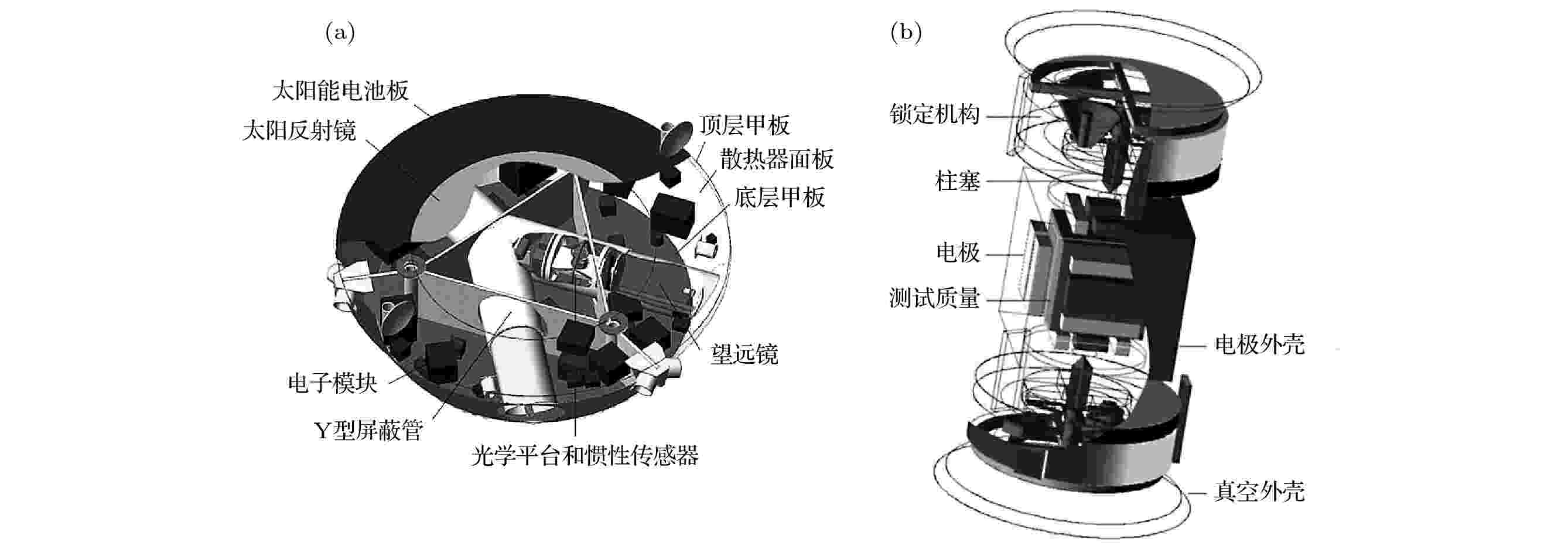
EDITOR'S SUGGESTION
2021, 70 (22): 229501.
doi:10.7498/aps.70.20210747
Abstract +
The testing mass is the core sensor for measuring the spatial gravitational waves. The high-energy cosmic ray particles penetrating the outer structure of the spacecraft result in the electrical charges on the testing mass. The Coulomb force produced by the charges on the surrounding conducting surface and the Lorentz force generated by the motion through the interplanetary magnetic field will exert a serious influence on the geodesic motion of the testing mass. In this paper are investigated the process and mechanism of charging the testing mass by high-energy particles from different cosmic rays through using the Monte Carlo simulation method. It is concluded that the charging rate gradually increases with the decrease of cut-off energy under the same energy spectrum. The positive charging rate (elementary charges per second) in the years of minimum solar activity is predicted to be 39.5 +e/s, and the protons account for approximately 83.16% of the total quantity of galactic cosmic rays. The positive charging rate of the testing mass during the years of maximum solar activity is about 12.5 +e/s, and the charging rate of the testing mass of the worst solar energetic particle event in 1989 is about 120700 +e/s. The charging rate of the components of the galactic cosmic ray depends on the deposition of primary particles of each component in the testing mass during the years of minimum solar activity, with primary particles accounting for 73% of the total charging rate. The charging contribution of protons in years of minimum solar activity is mainly in an energy range of 0.1–1 GeV, accounting for about 65%. The research results can be used to assess the charging patterns of test quality on-orbit charges and provide a basis for designing the charge management and on-orbit work.








